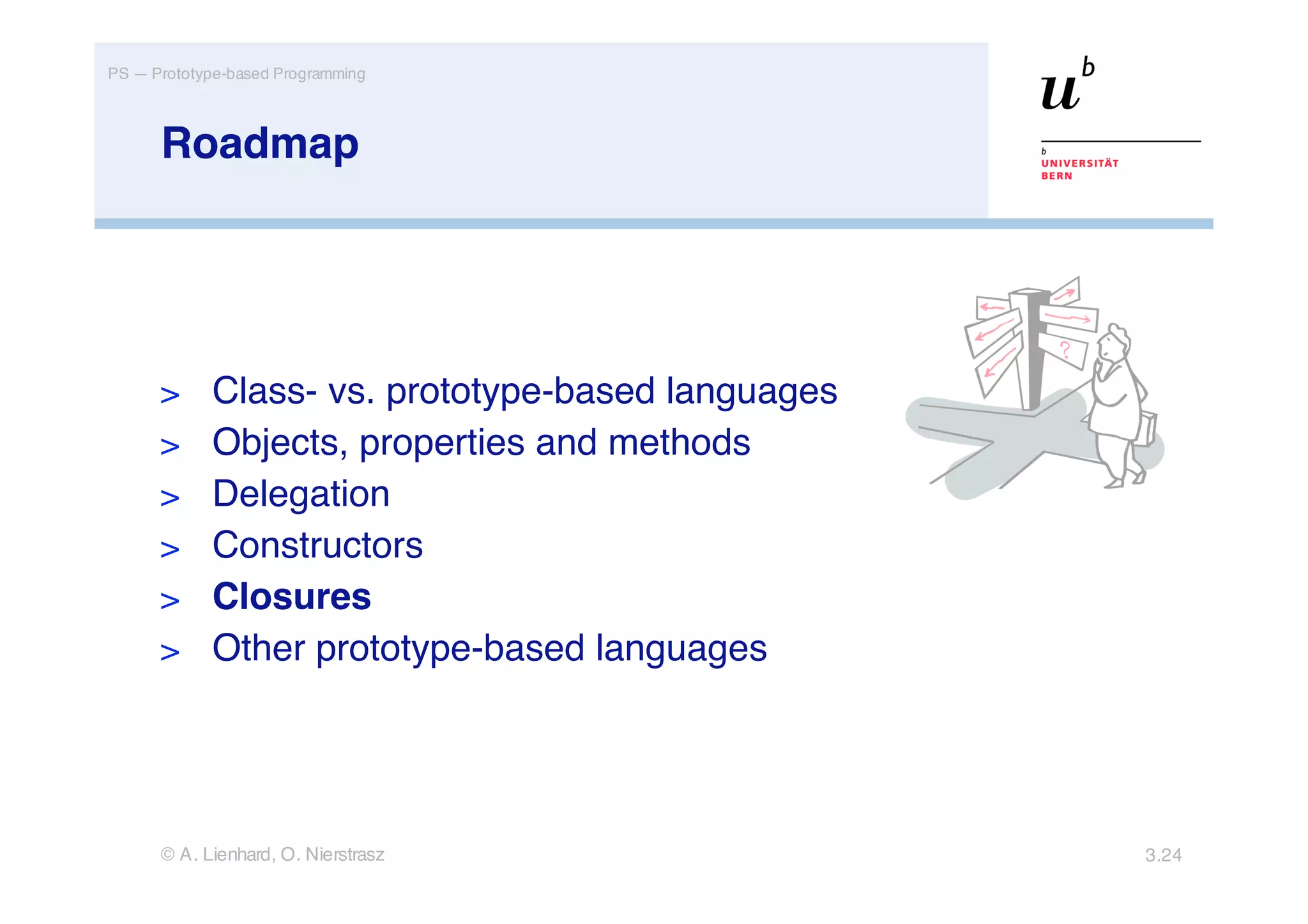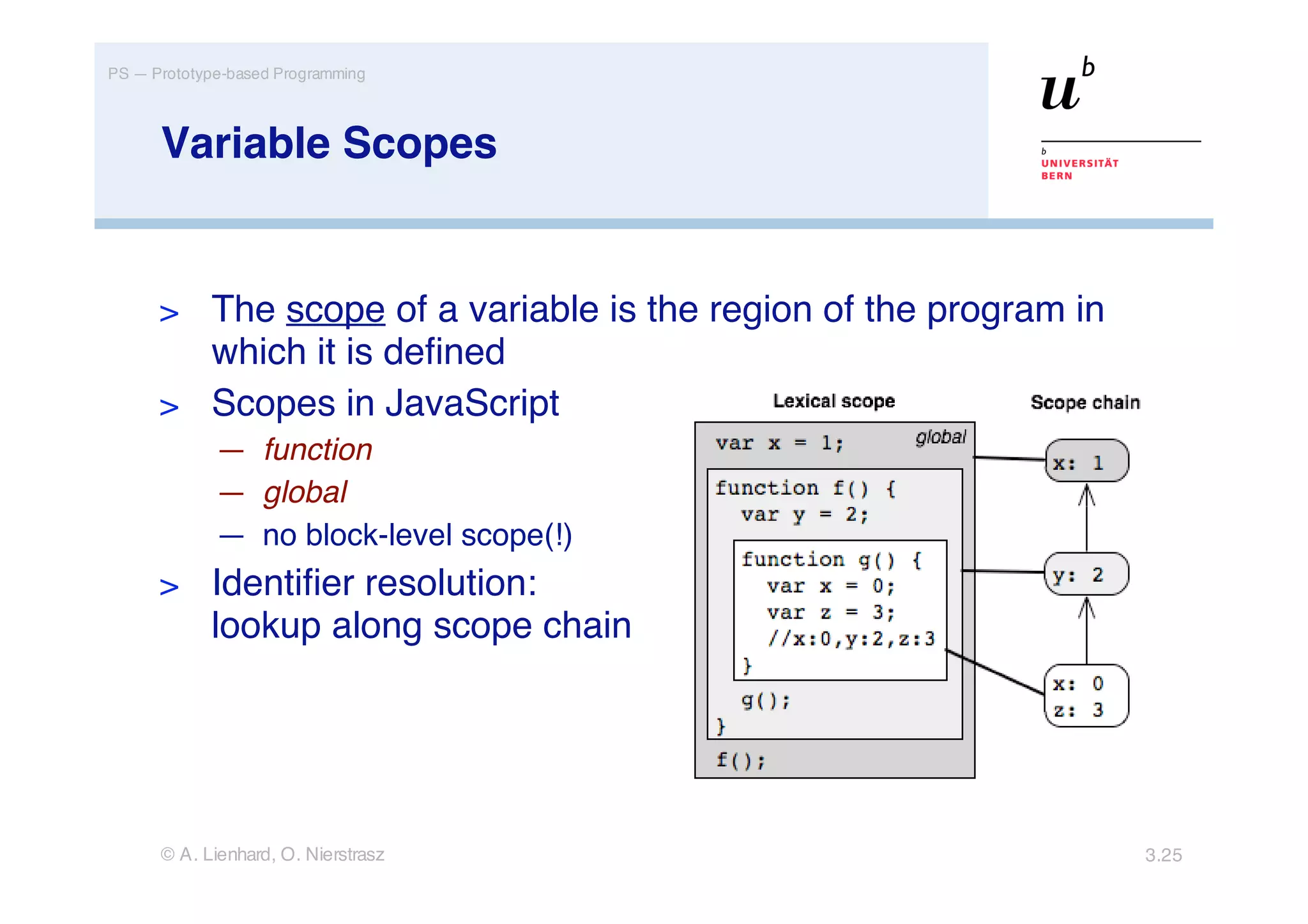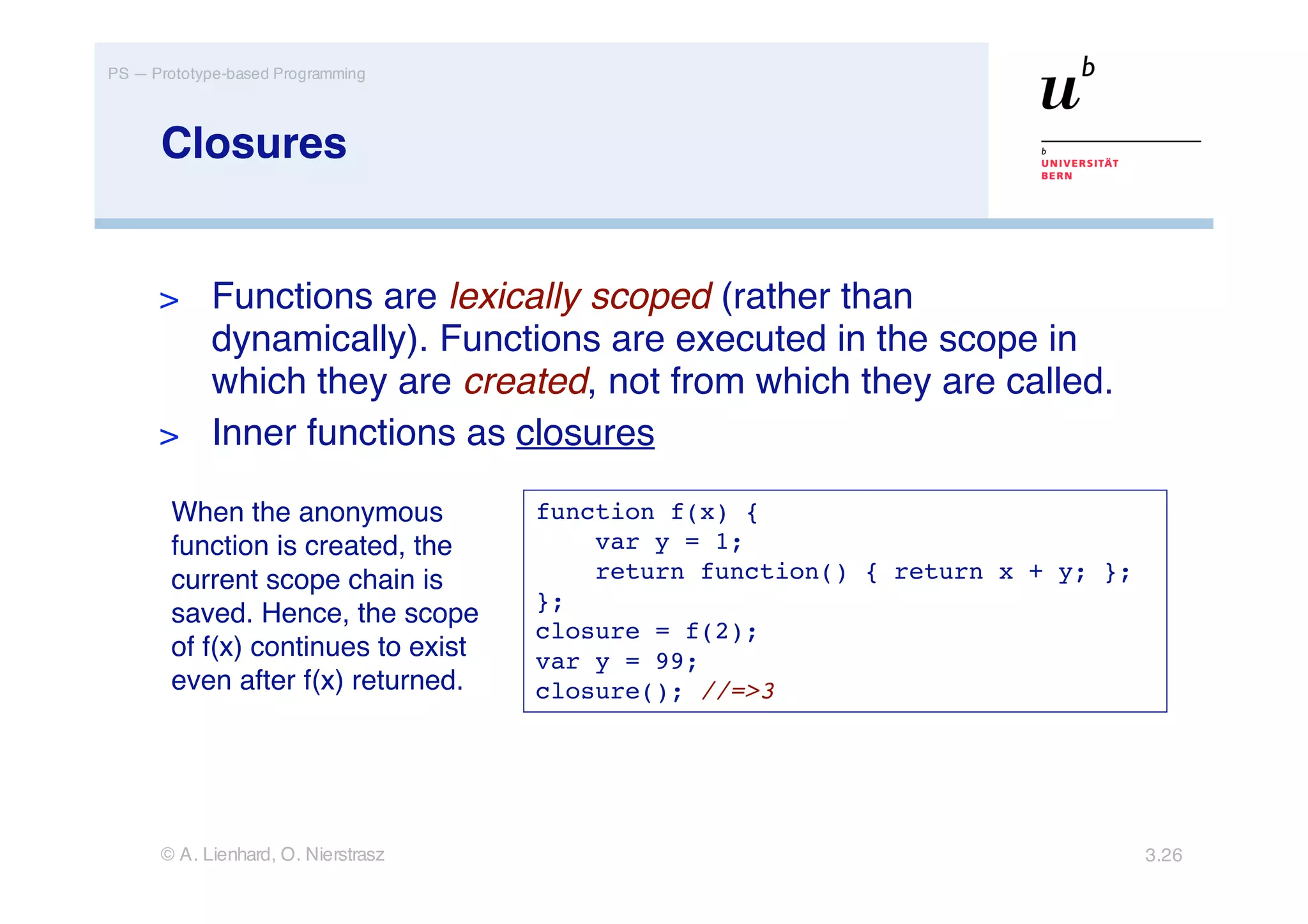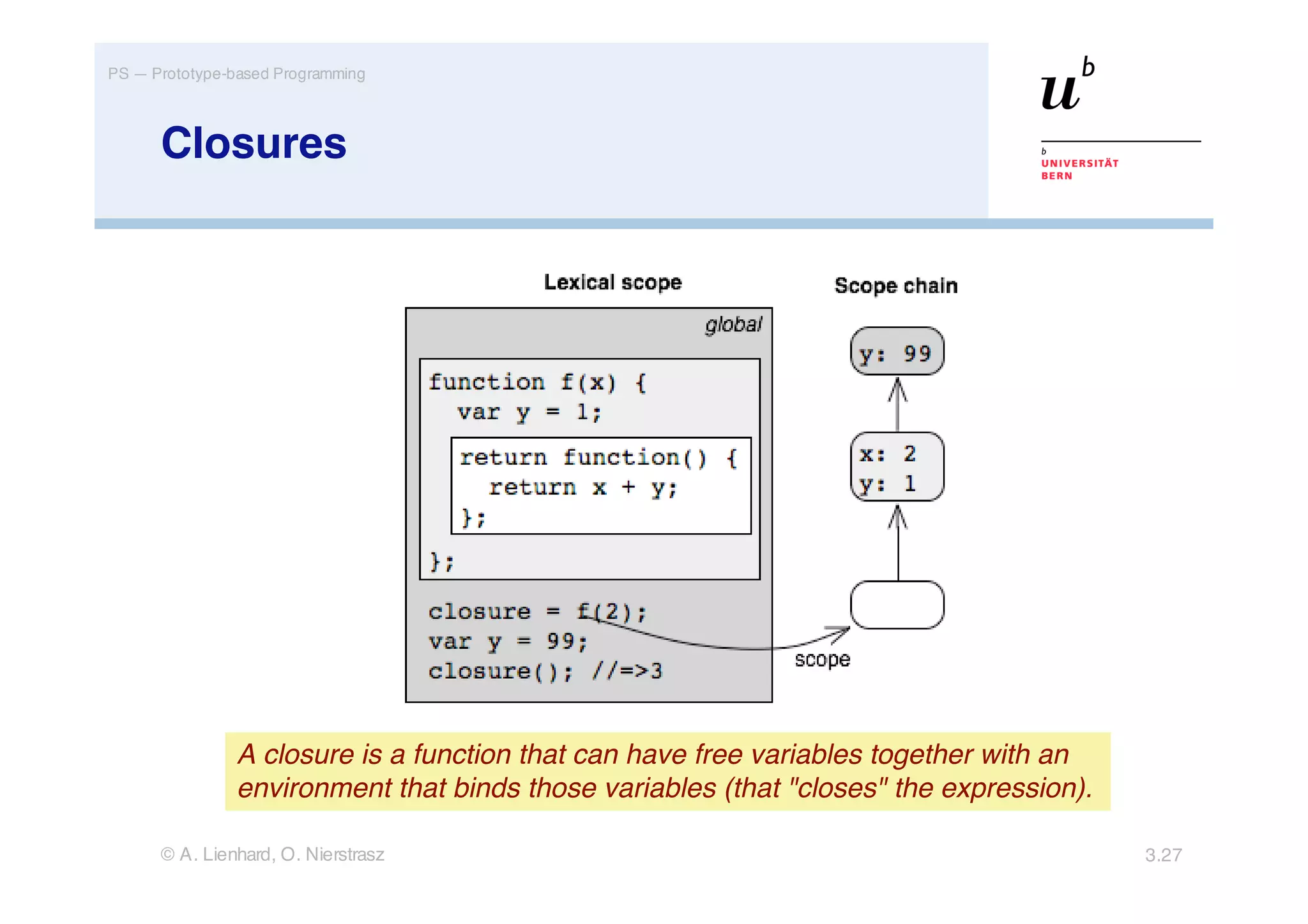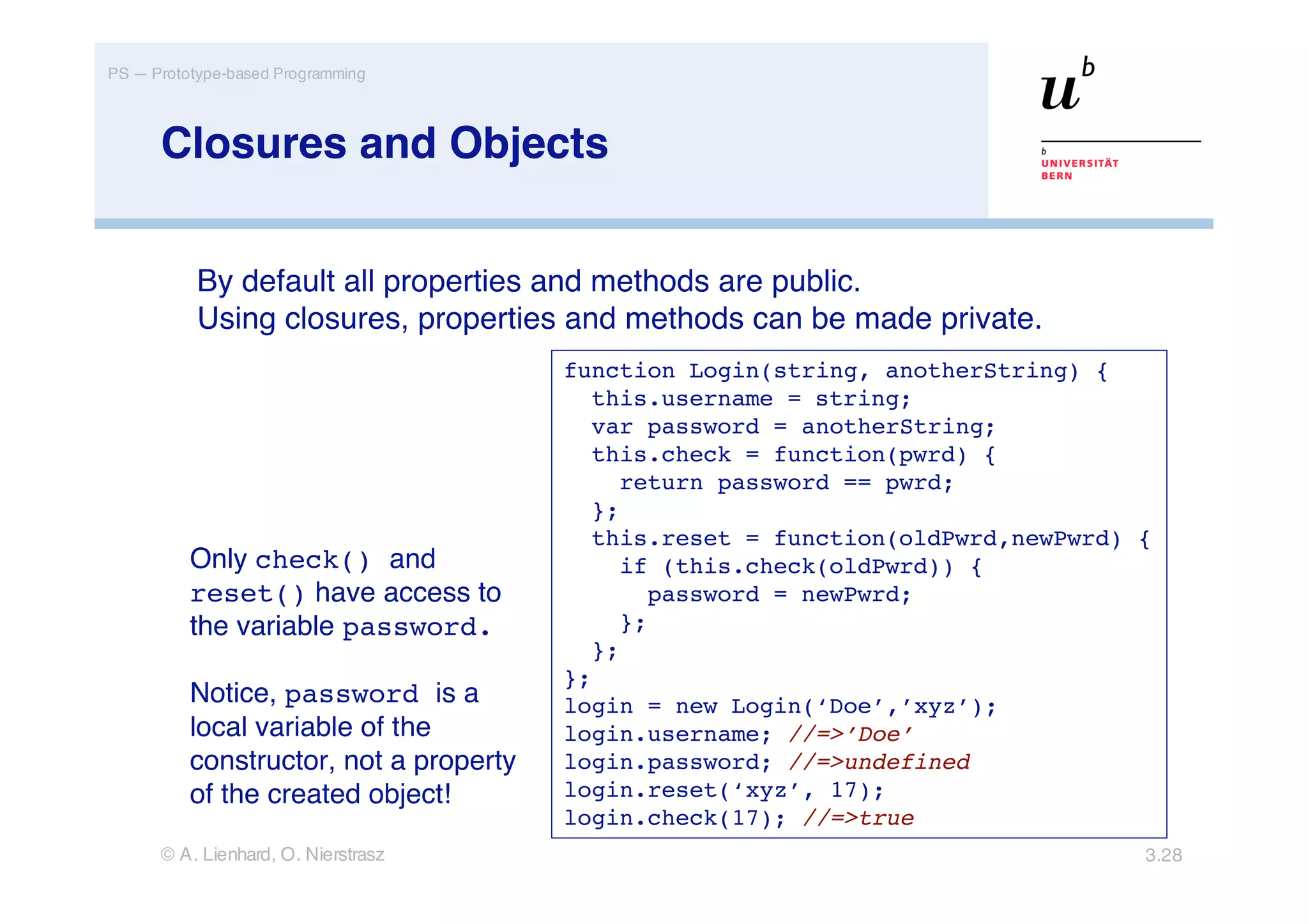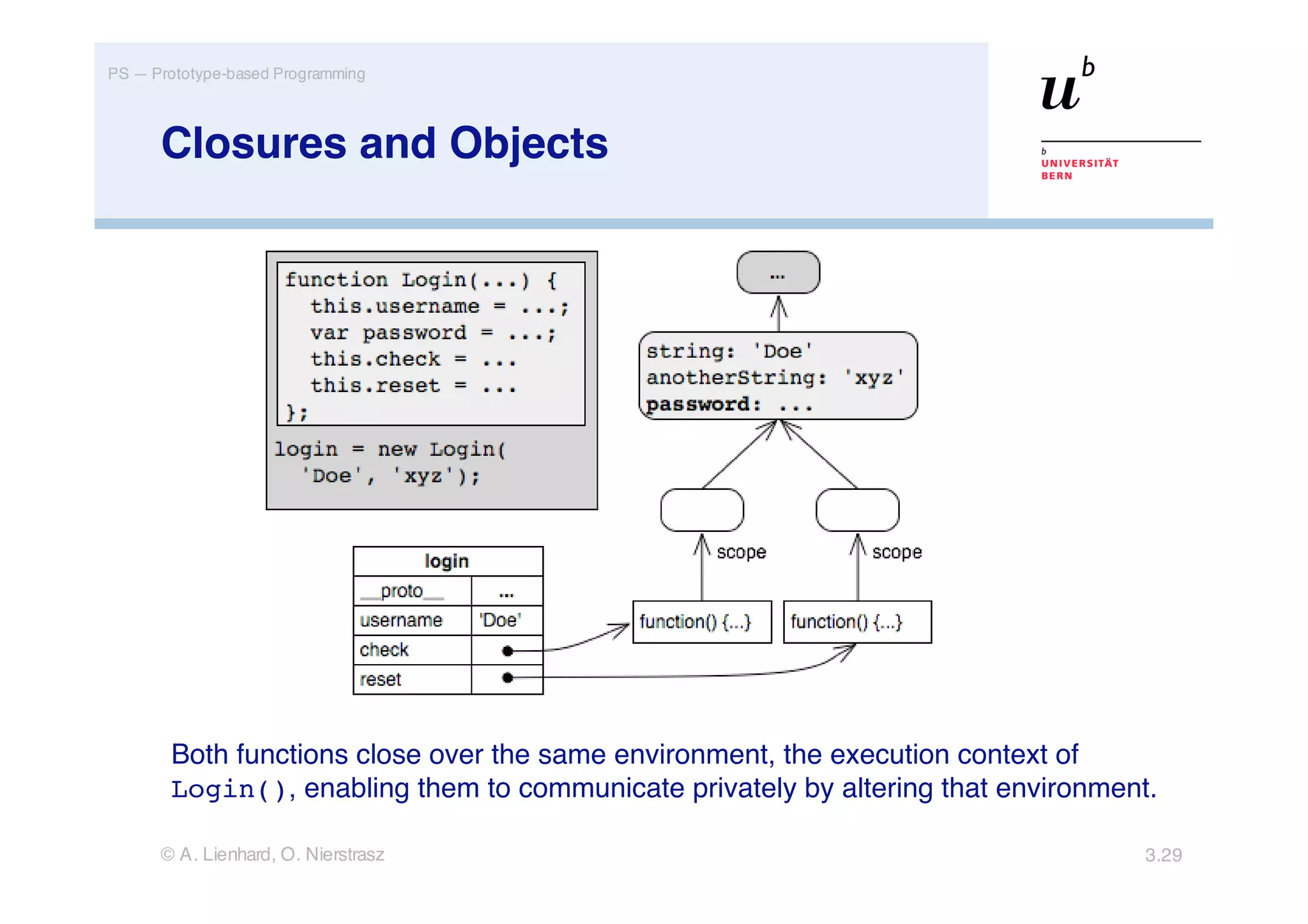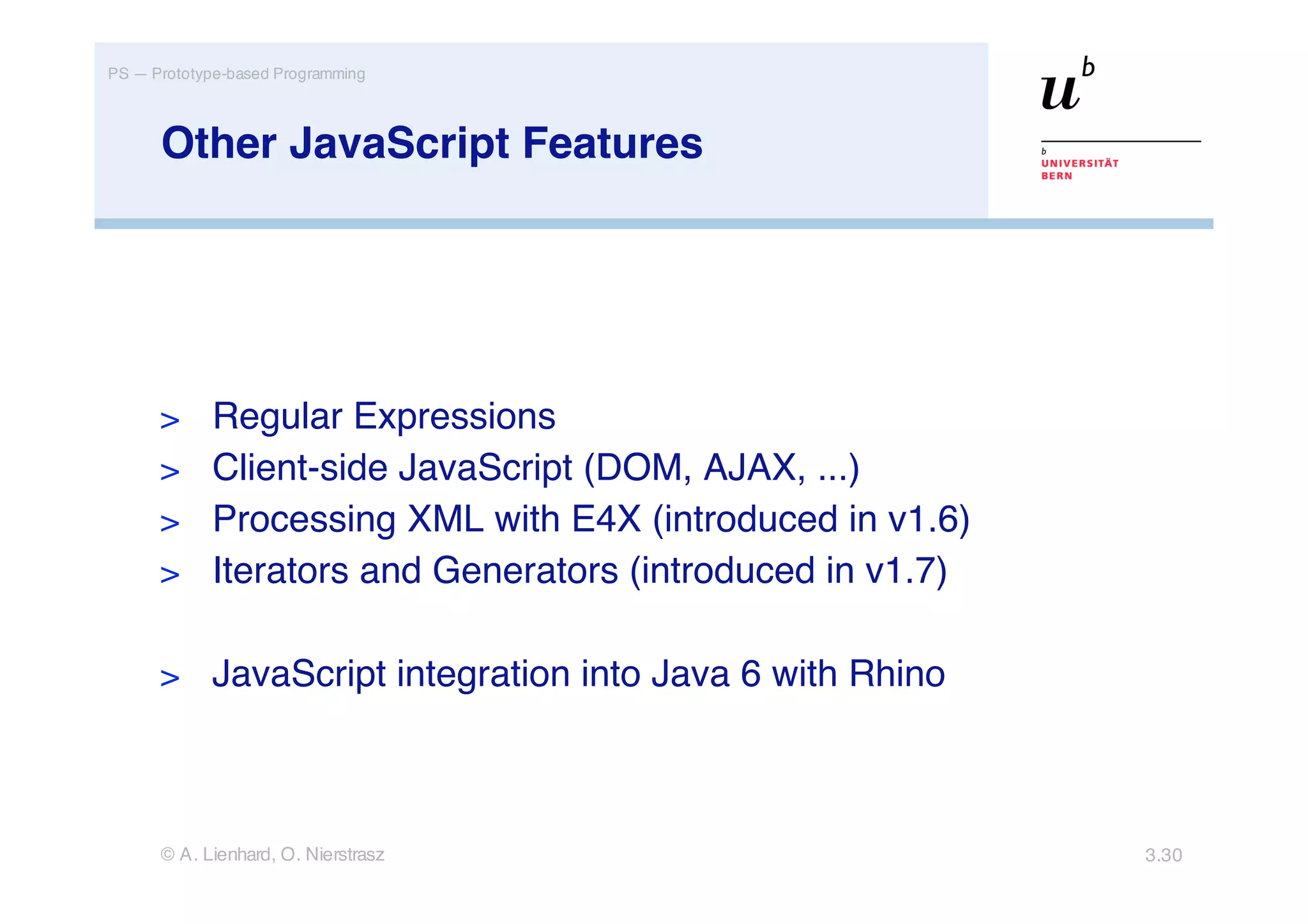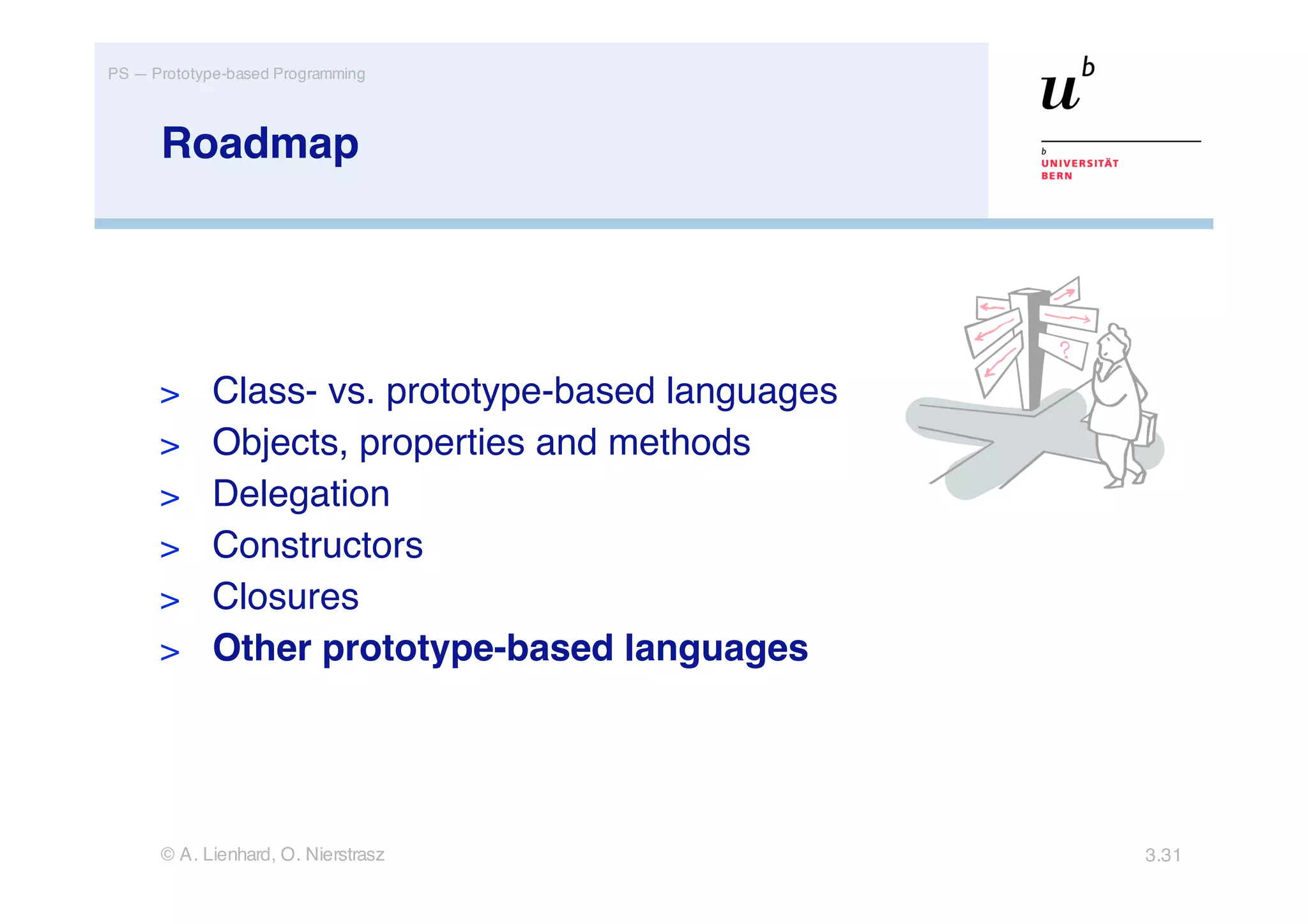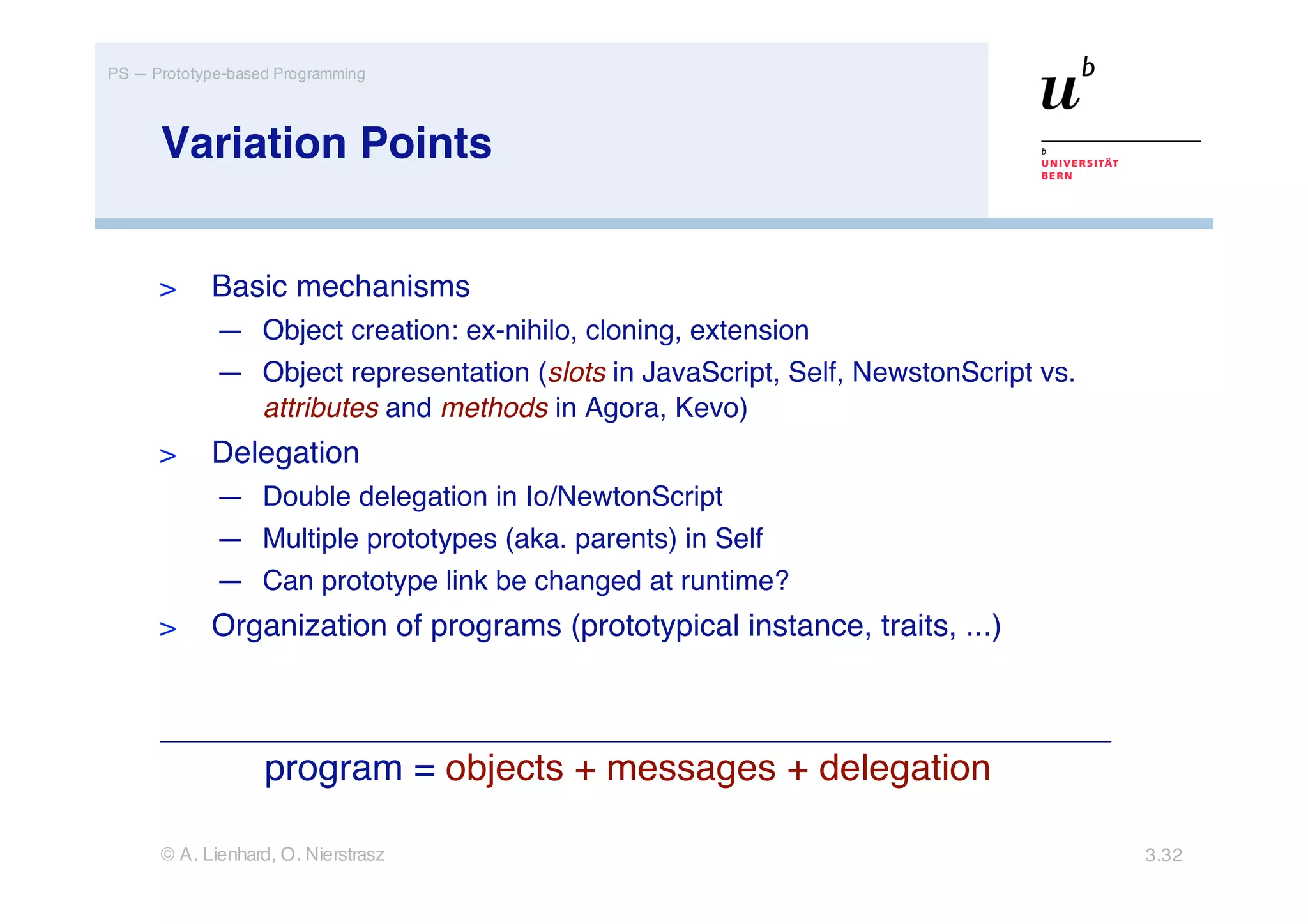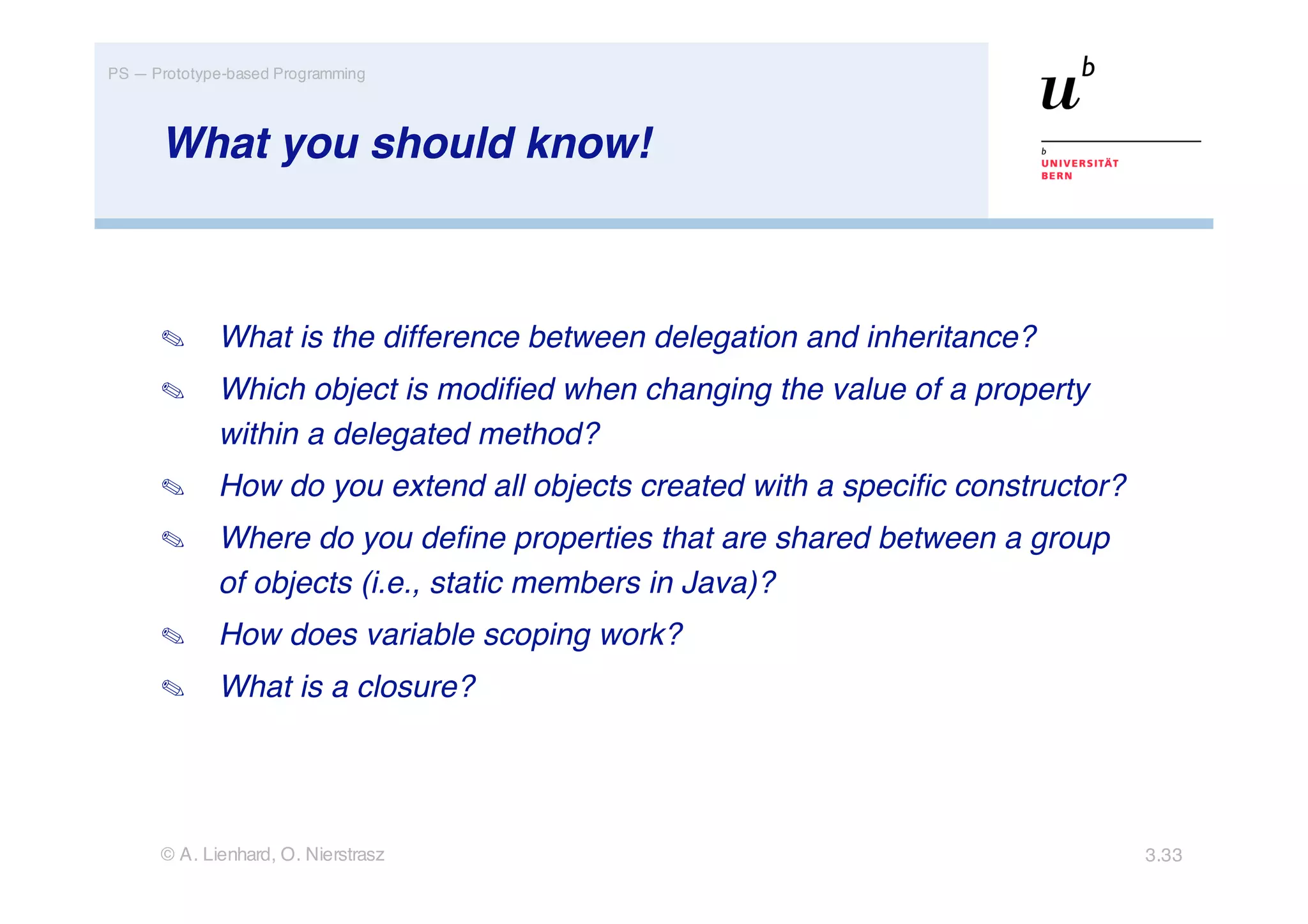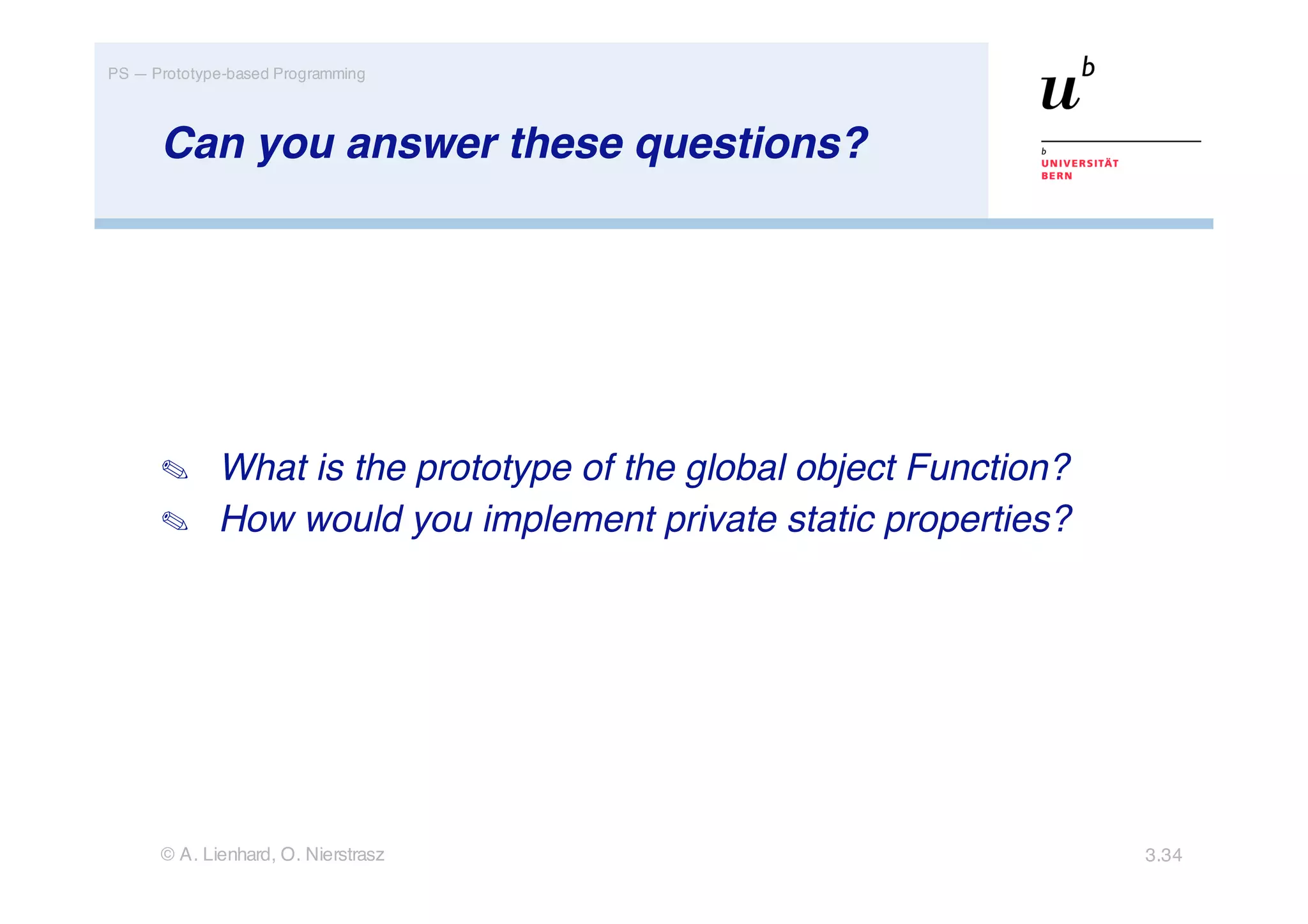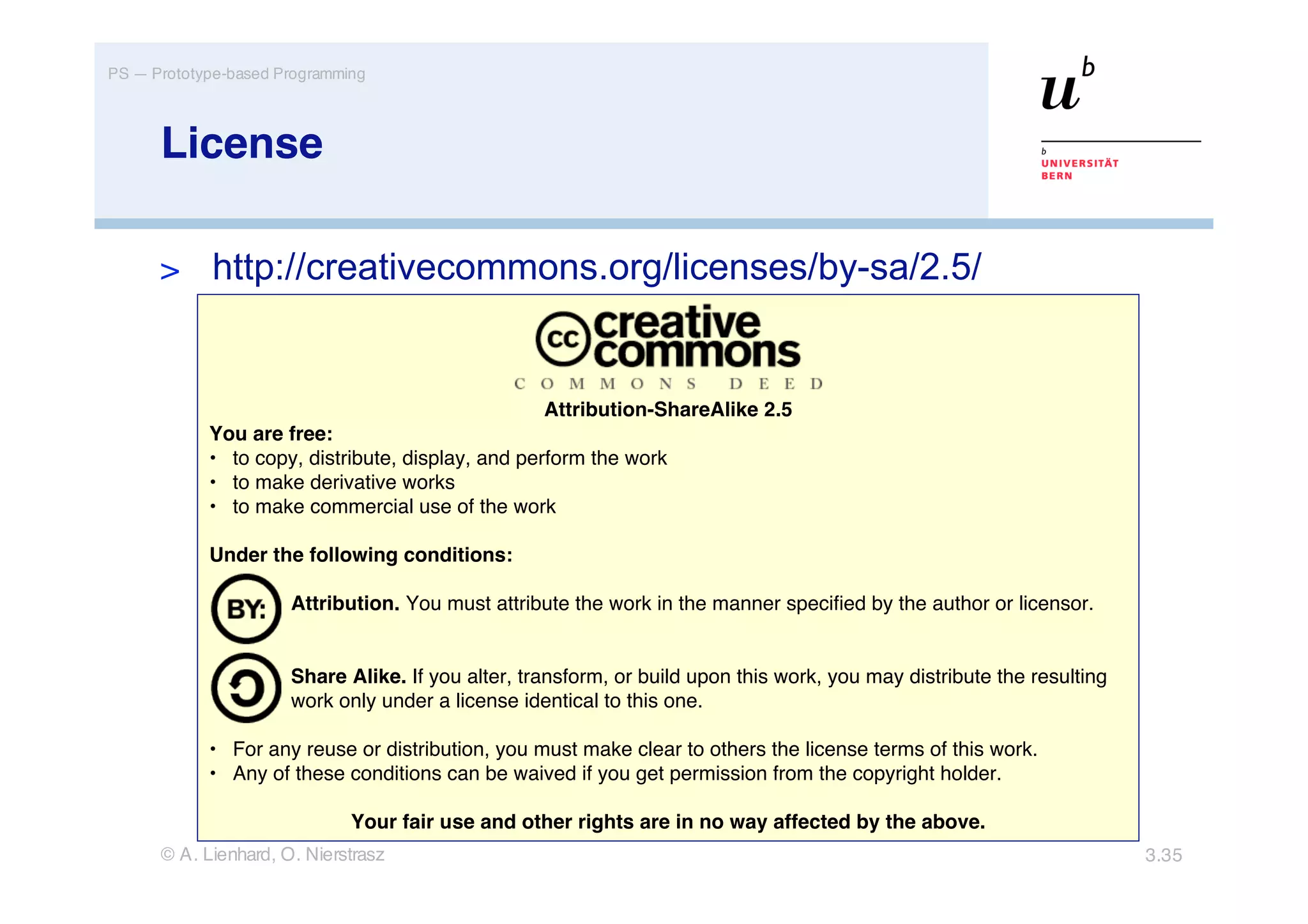The document provides a comprehensive overview of prototype-based programming, contrasting it with class-based programming and emphasizing concepts such as objects, properties, methods, and delegation. It details JavaScript as a prototype-based language, explores its syntax, and covers topics like constructors, closures, and variable scopes. Additionally, it outlines questions and concepts critical for understanding prototype-based programming principles.
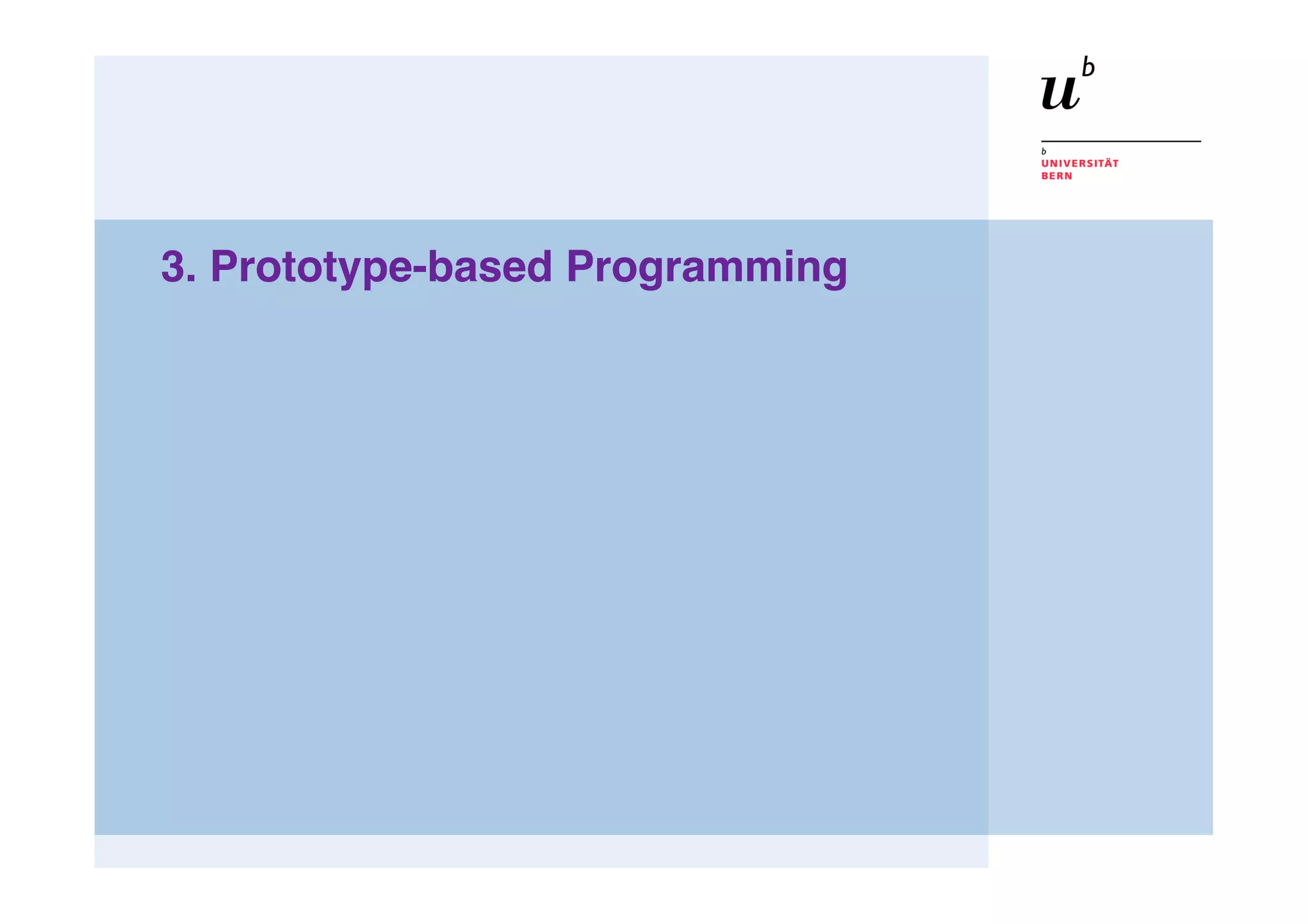
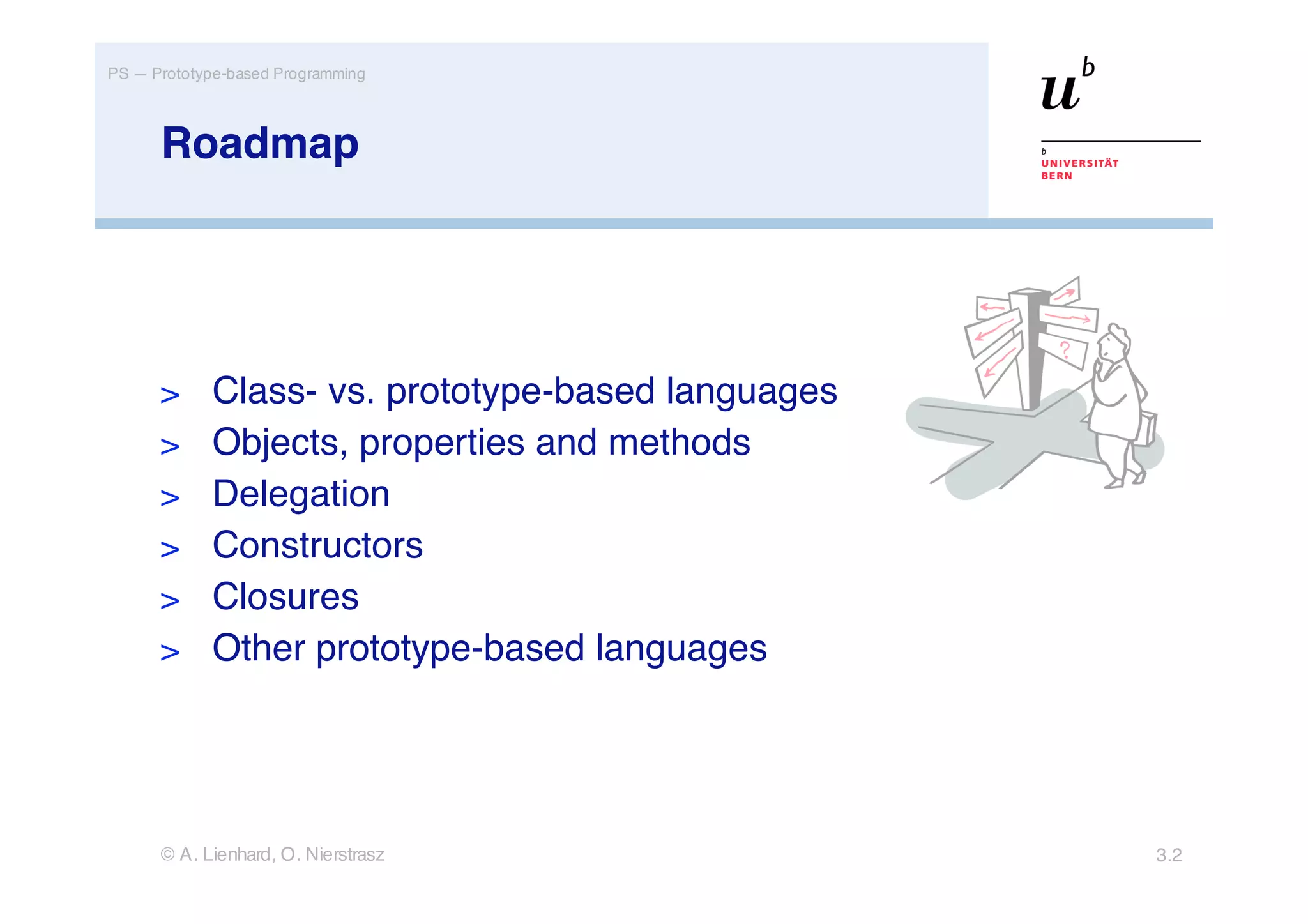
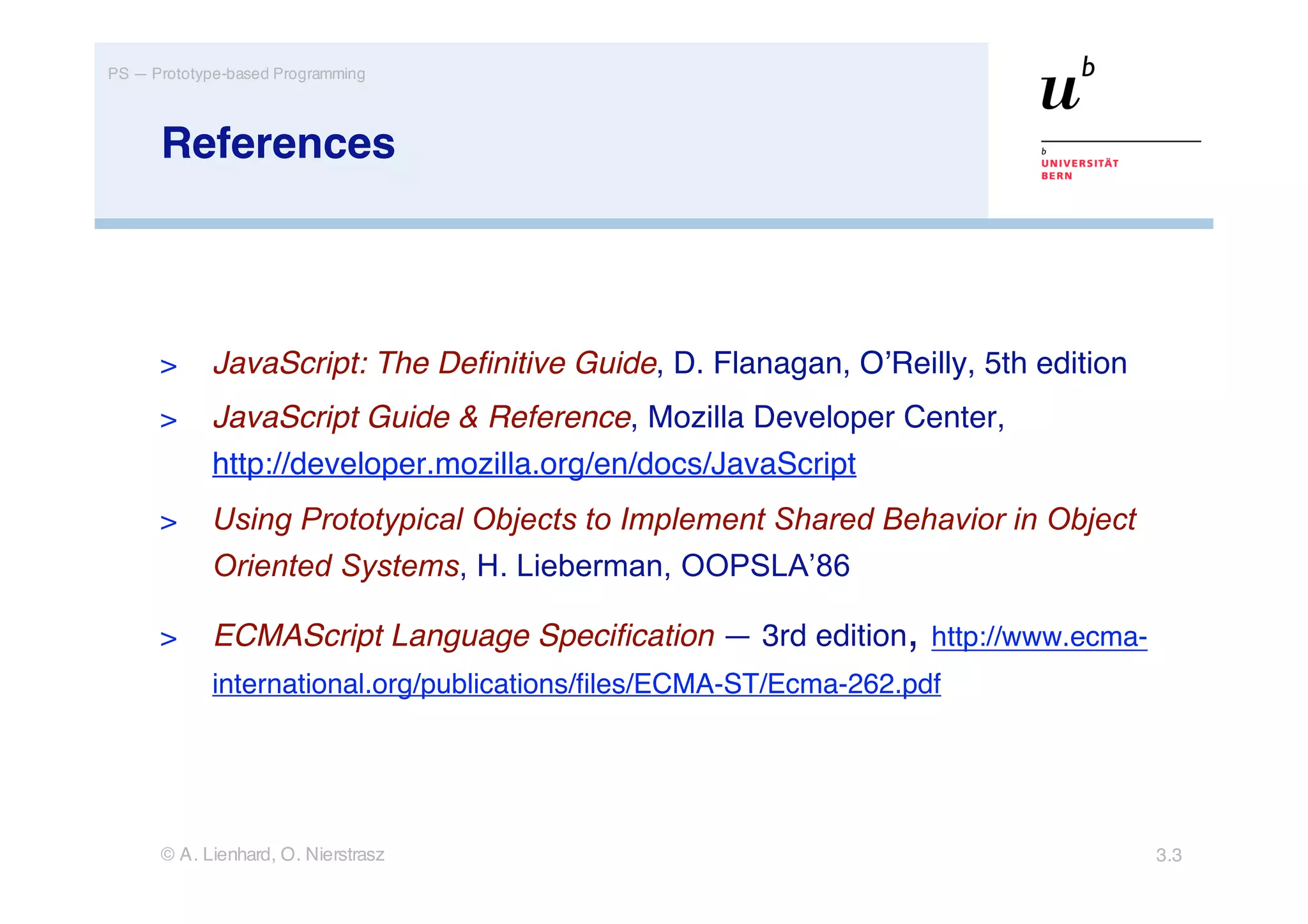
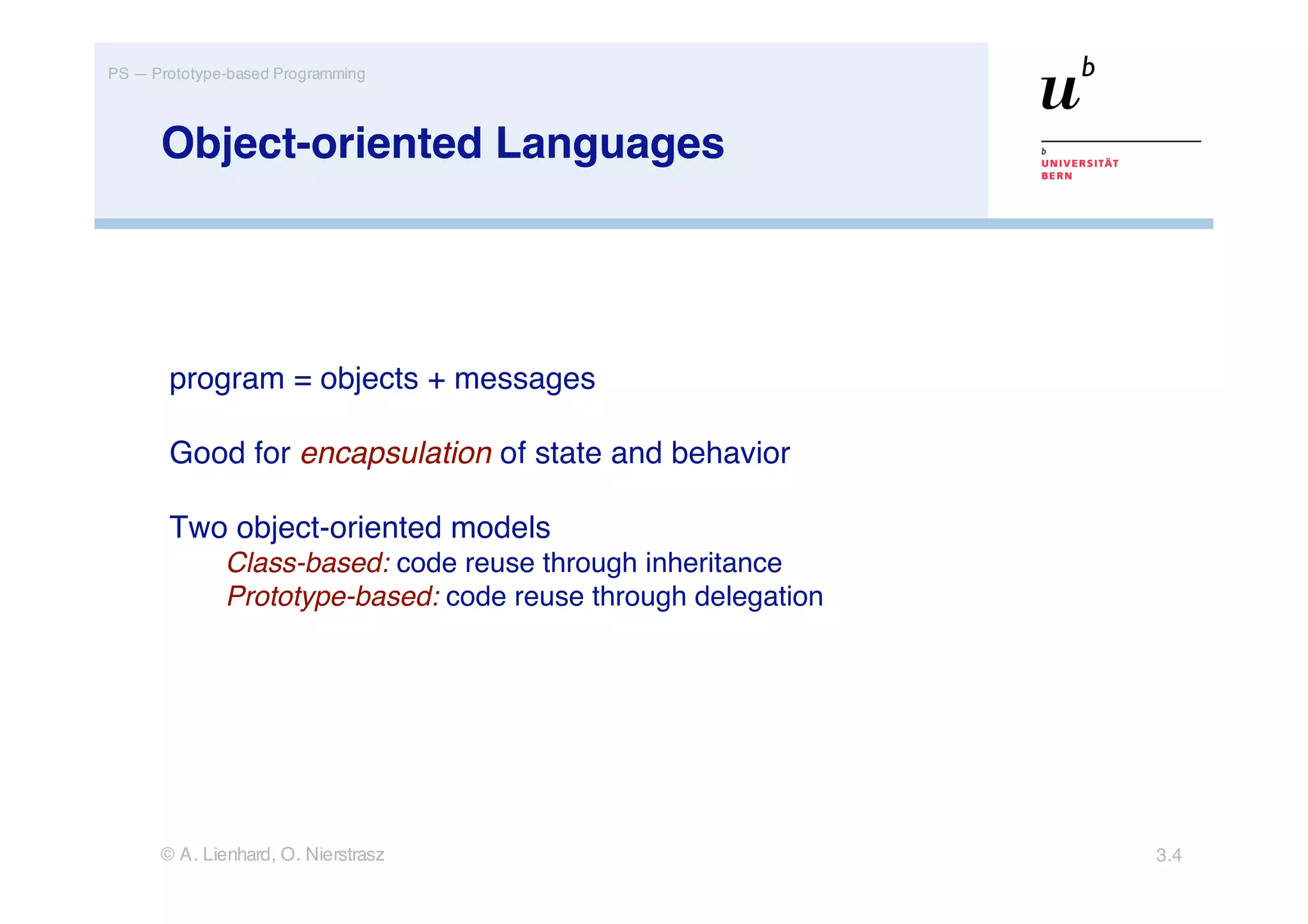
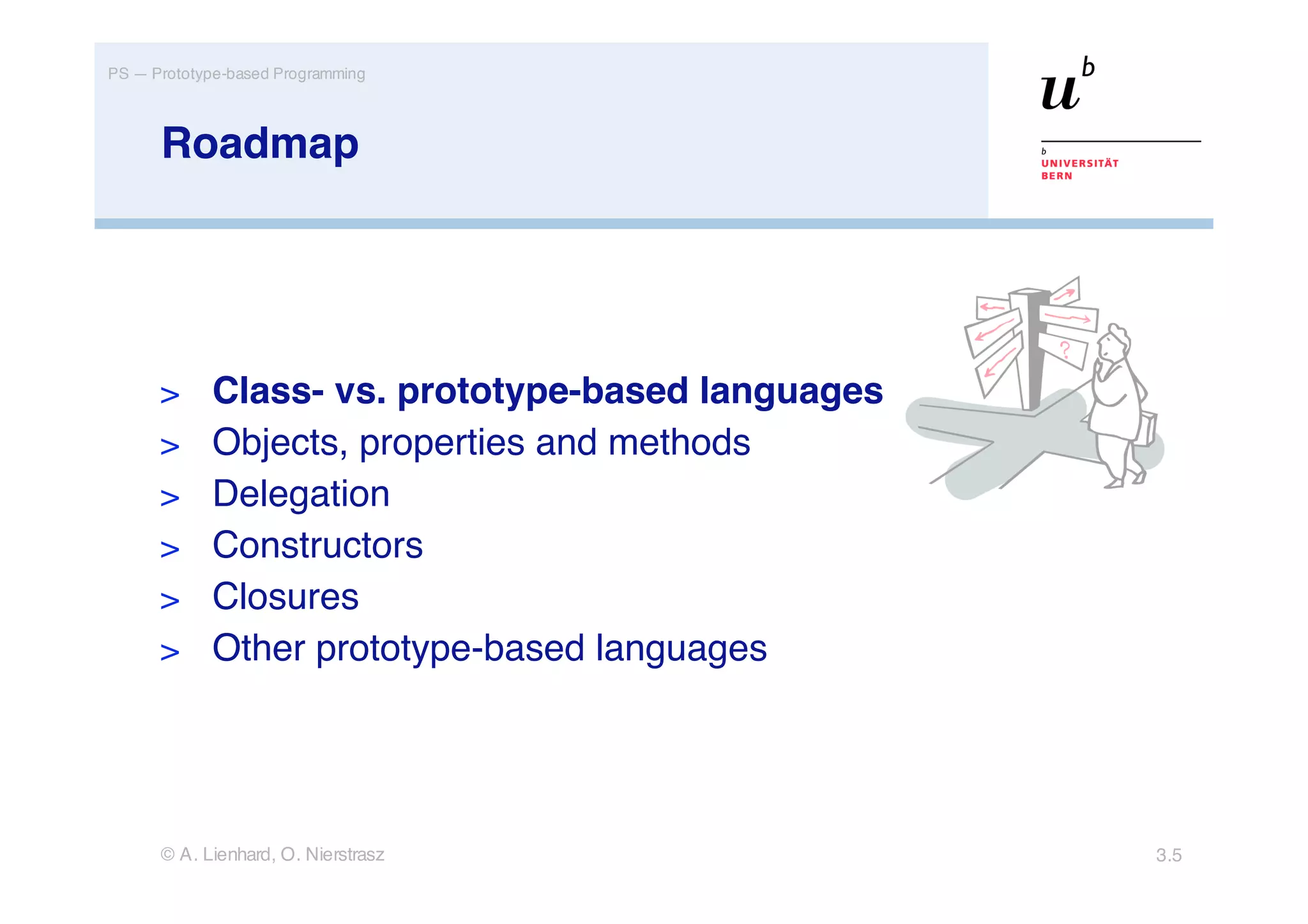
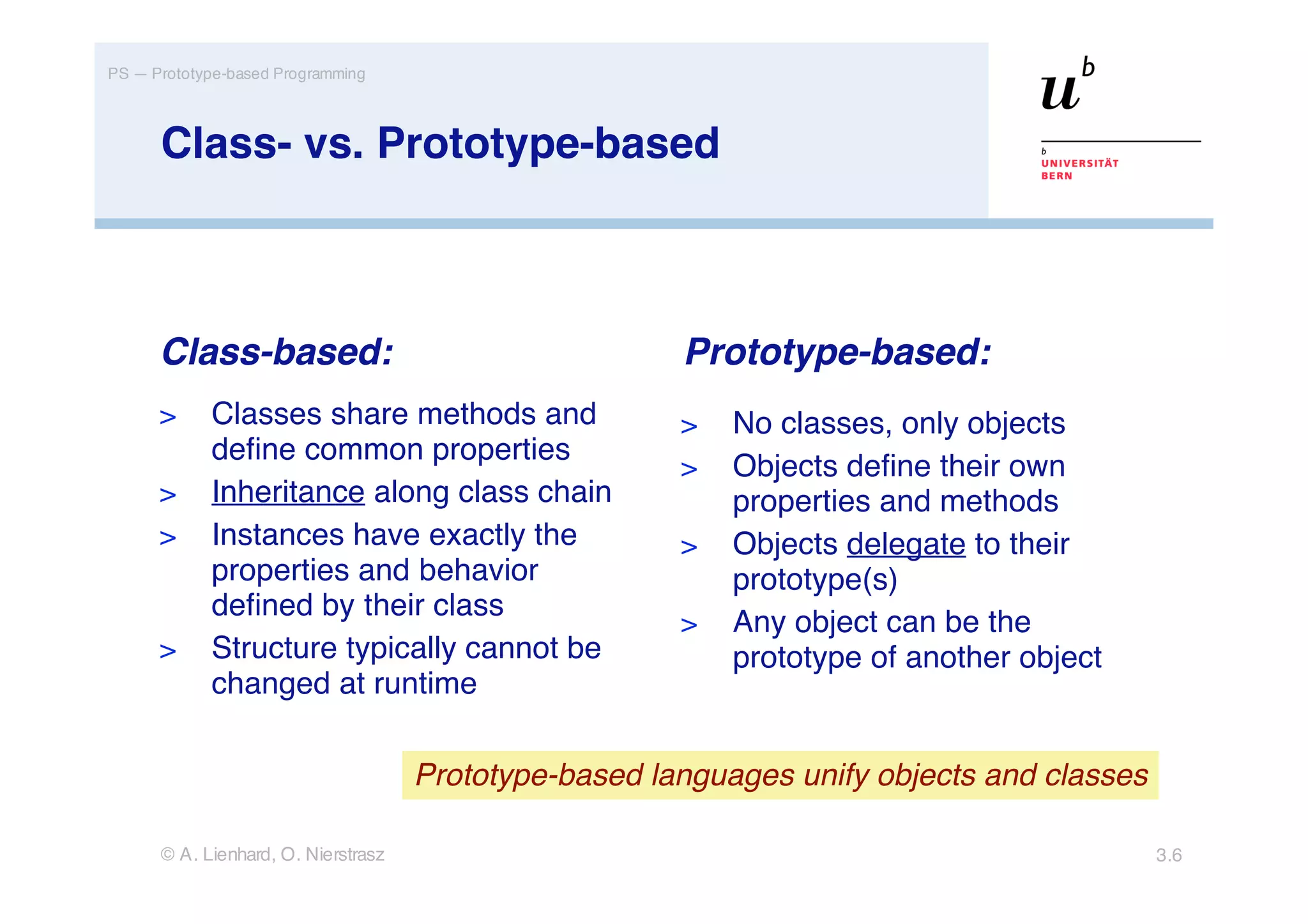
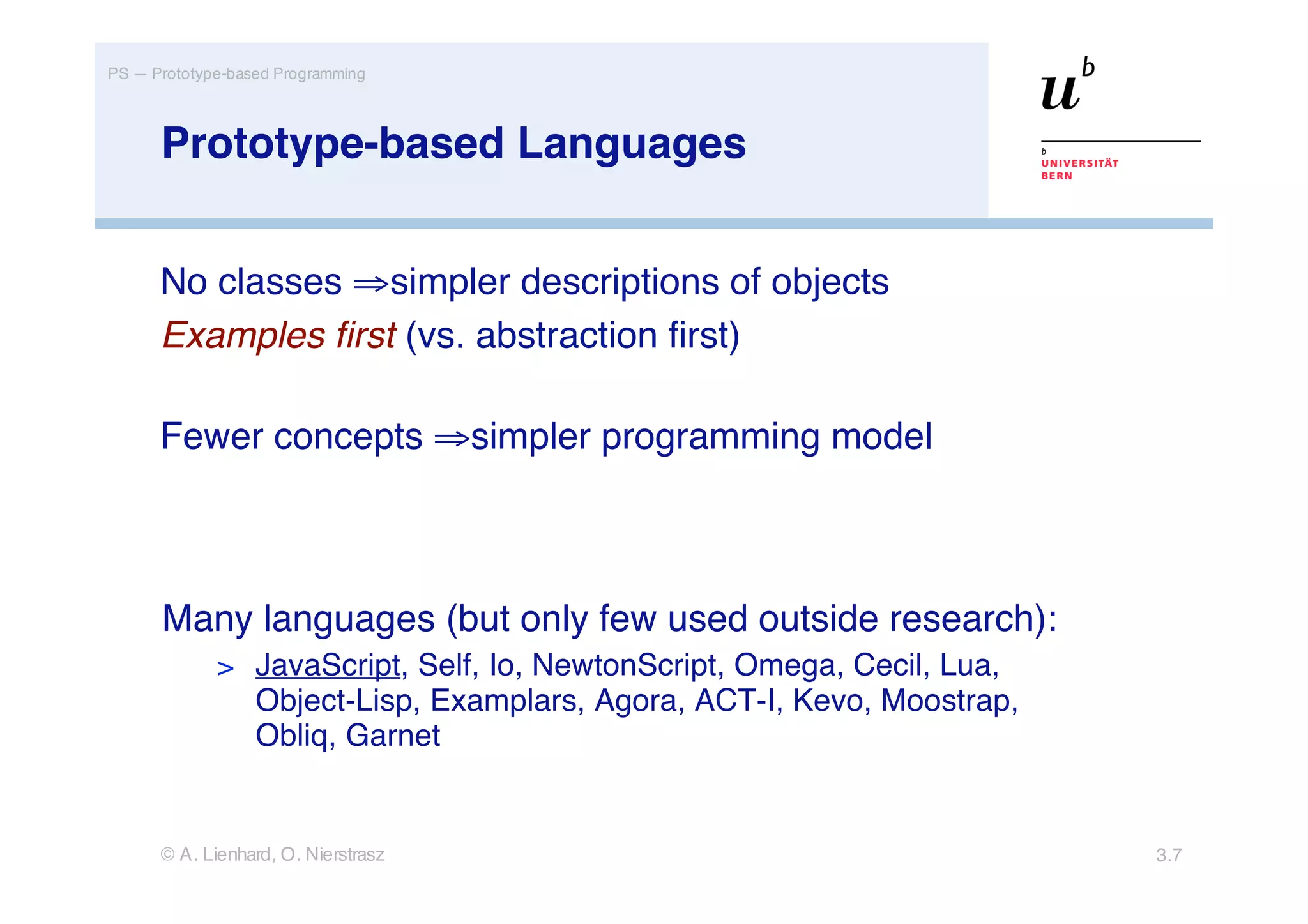
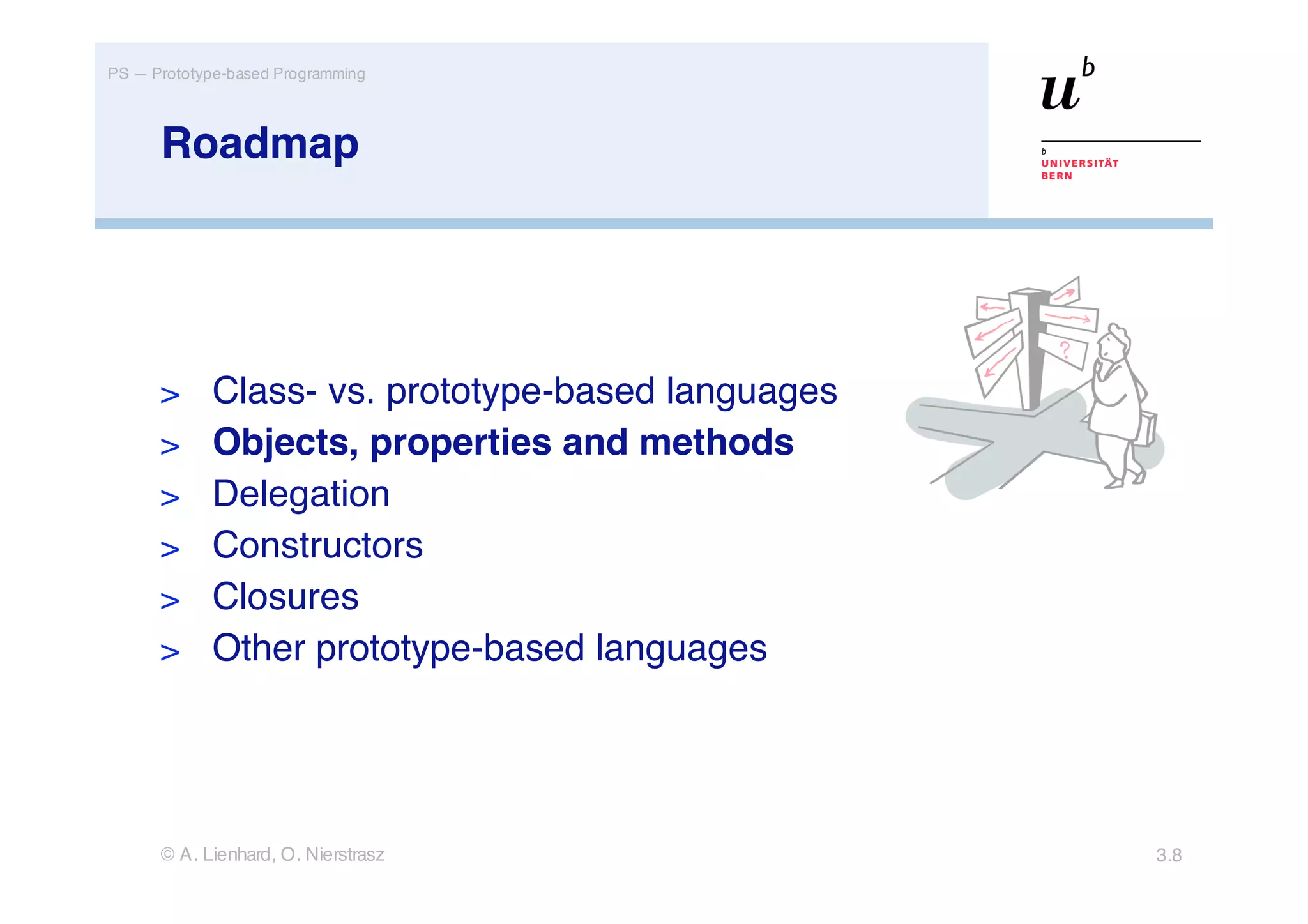
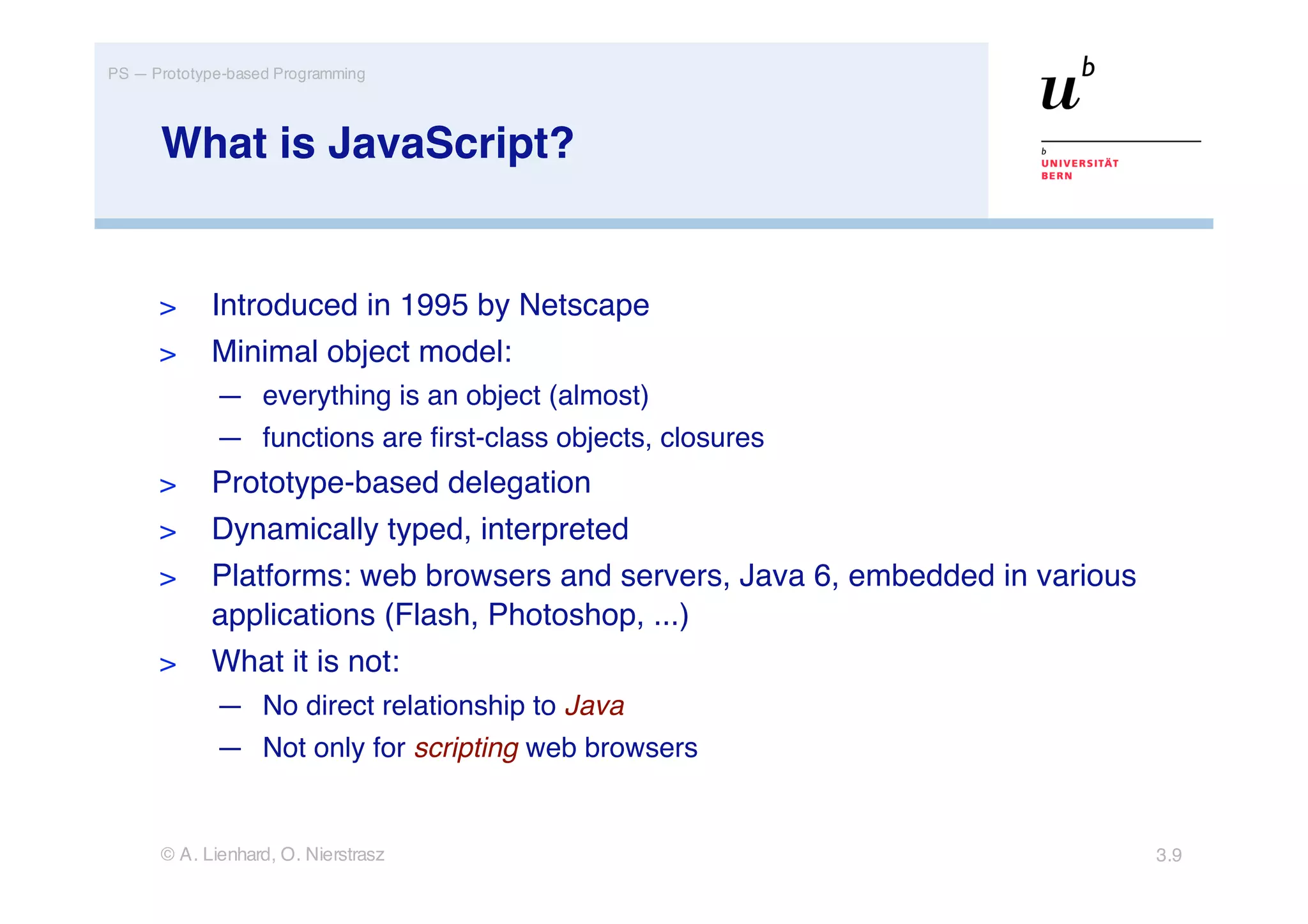
![PS — Prototype-based Programming
Syntax
// single line comment
Comments: /* multi
line comment */
First character must be a letter, _, or $; subsequent characters
Identifiers:
can be digits: i, v17, $str, __proto__
‘a string’, “another string”, “that’s also a string”
Basic literals: 17, 6.02e-32
true, false, null, undefined
var point = { x:1, y:2 }
empty: {}
Object literals: nested: var rect = {
upperLeft: { x:1, y:2 },
lowerRight: { x:4, y:5 } }
Function literals: var square = function(x) { return x*x; }
[1,2,3]
Array literals: []
assignement: =
Operators: equal: == strict equal: ===
© A. Lienhard, O. Nierstrasz 3.10](https://image.slidesharecdn.com/prototypes-100111111609-phpapp02/75/Prototype-based-Programming-with-JavaScript-10-2048.jpg)
![PS — Prototype-based Programming
Object Properties
var book = { title:’JavaScript’ };
Reading properties
book.title; //=>’JavaScript’
Adding new properties book.author = ‘J. Doe’;
(at runtime) ‘author’ in book; //=>true
Inspecting objects var result = ‘’;
for (var name in book) {
result += name + ‘=’;
result += book[name] + ‘ ’;
};
//=>title=JavaScript author=J. Doe
Deleting properties delete book.title;
‘title’ in book; //=>false
© A. Lienhard, O. Nierstrasz 3.11](https://image.slidesharecdn.com/prototypes-100111111609-phpapp02/75/Prototype-based-Programming-with-JavaScript-11-2048.jpg)
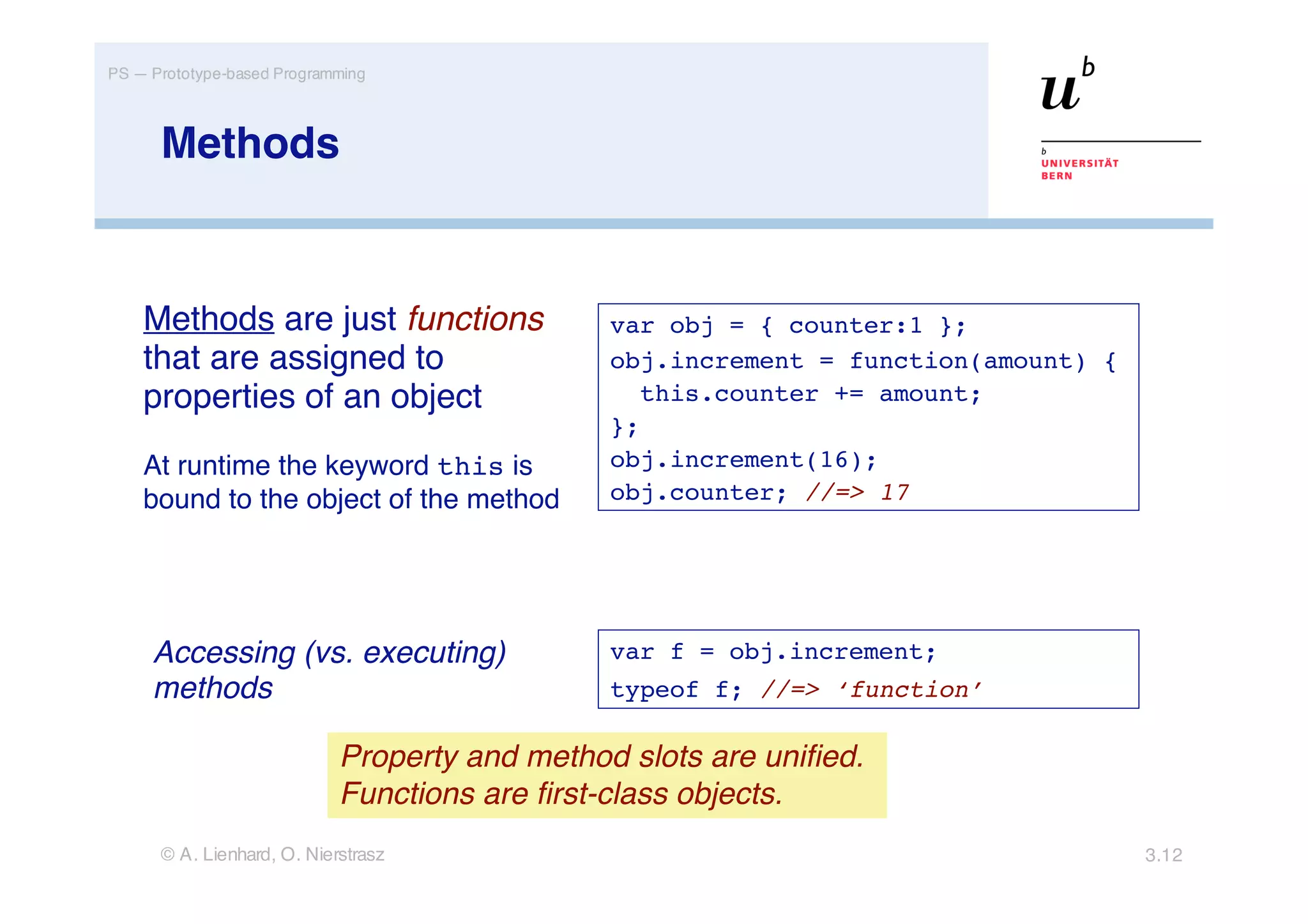
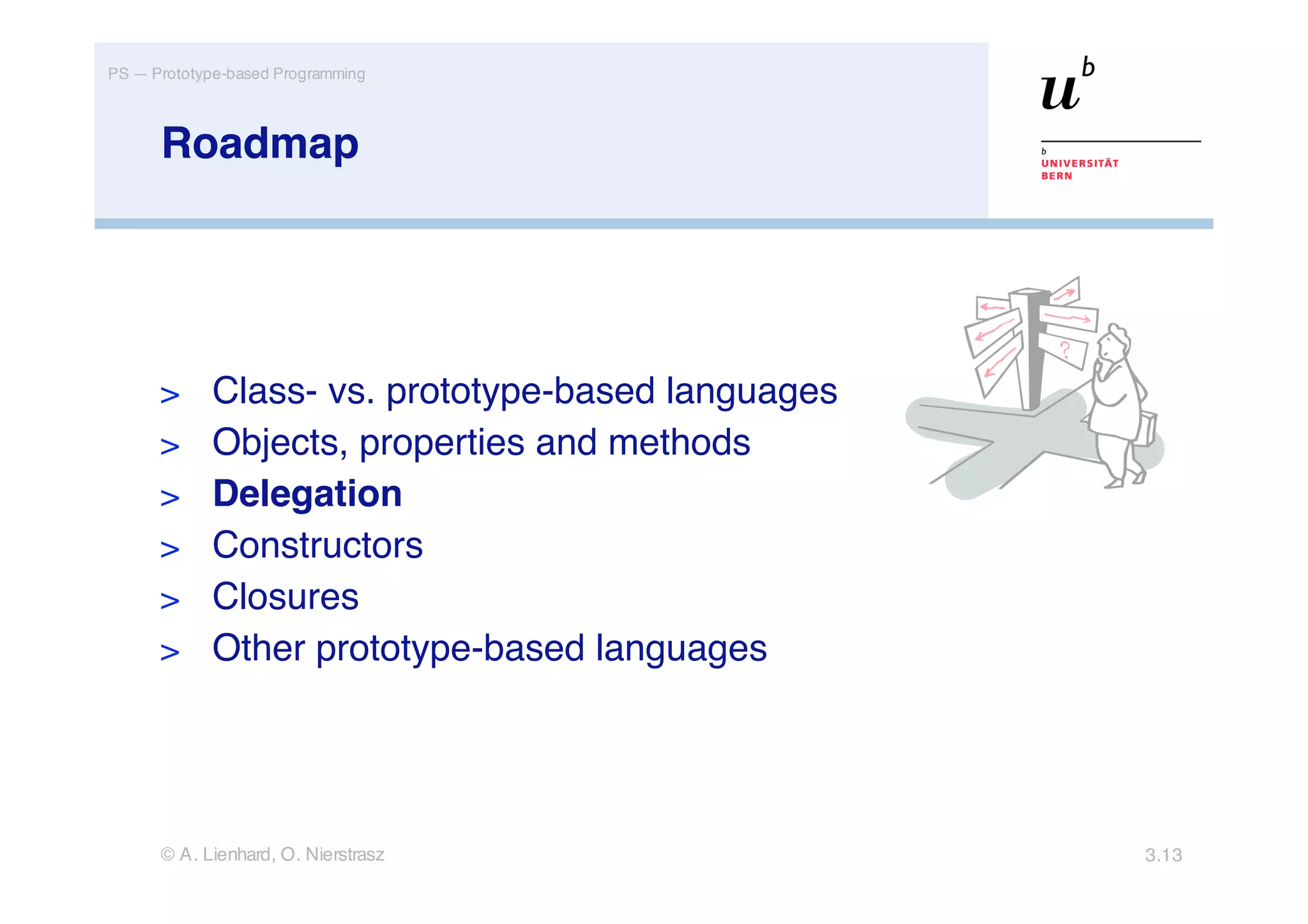
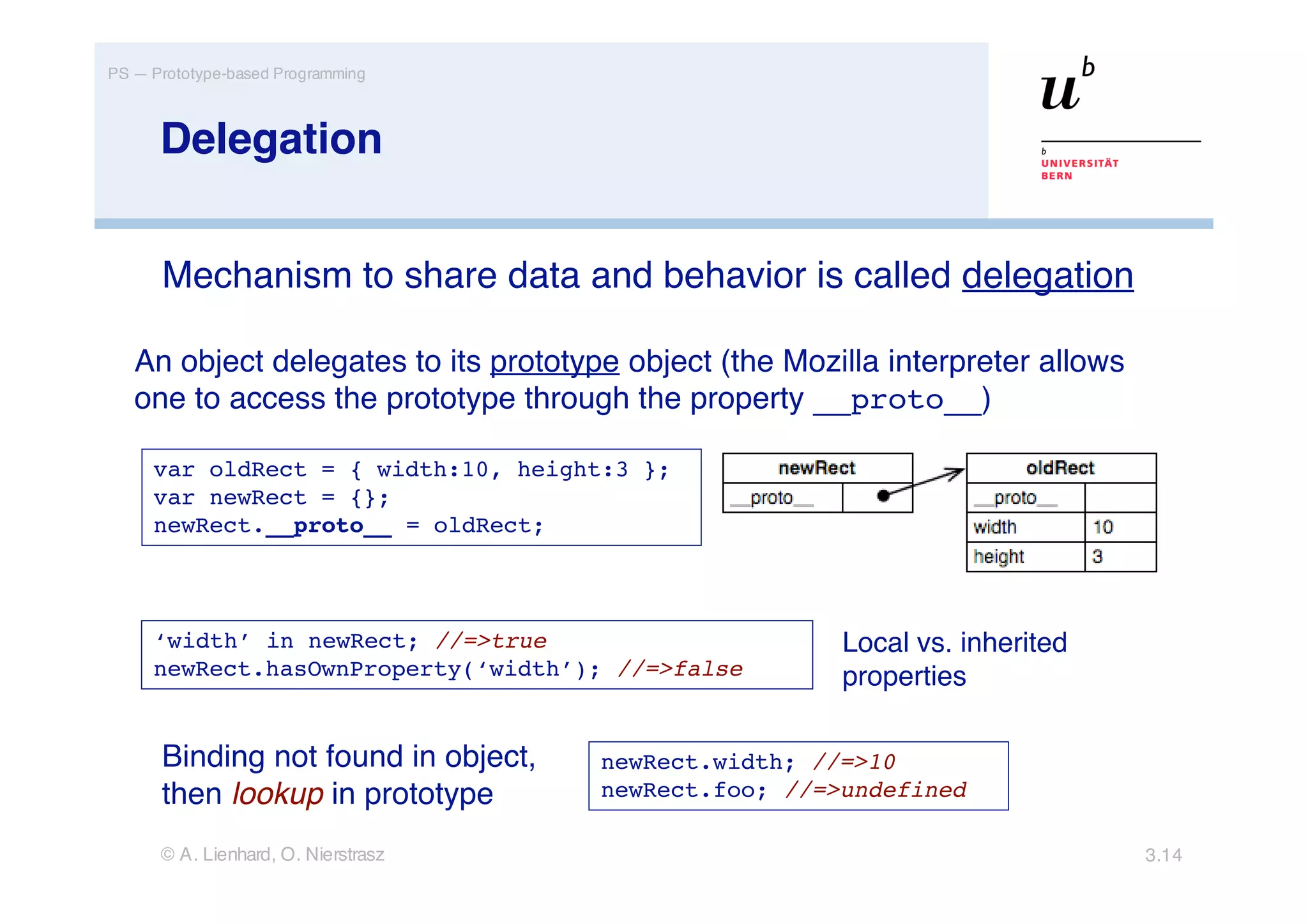
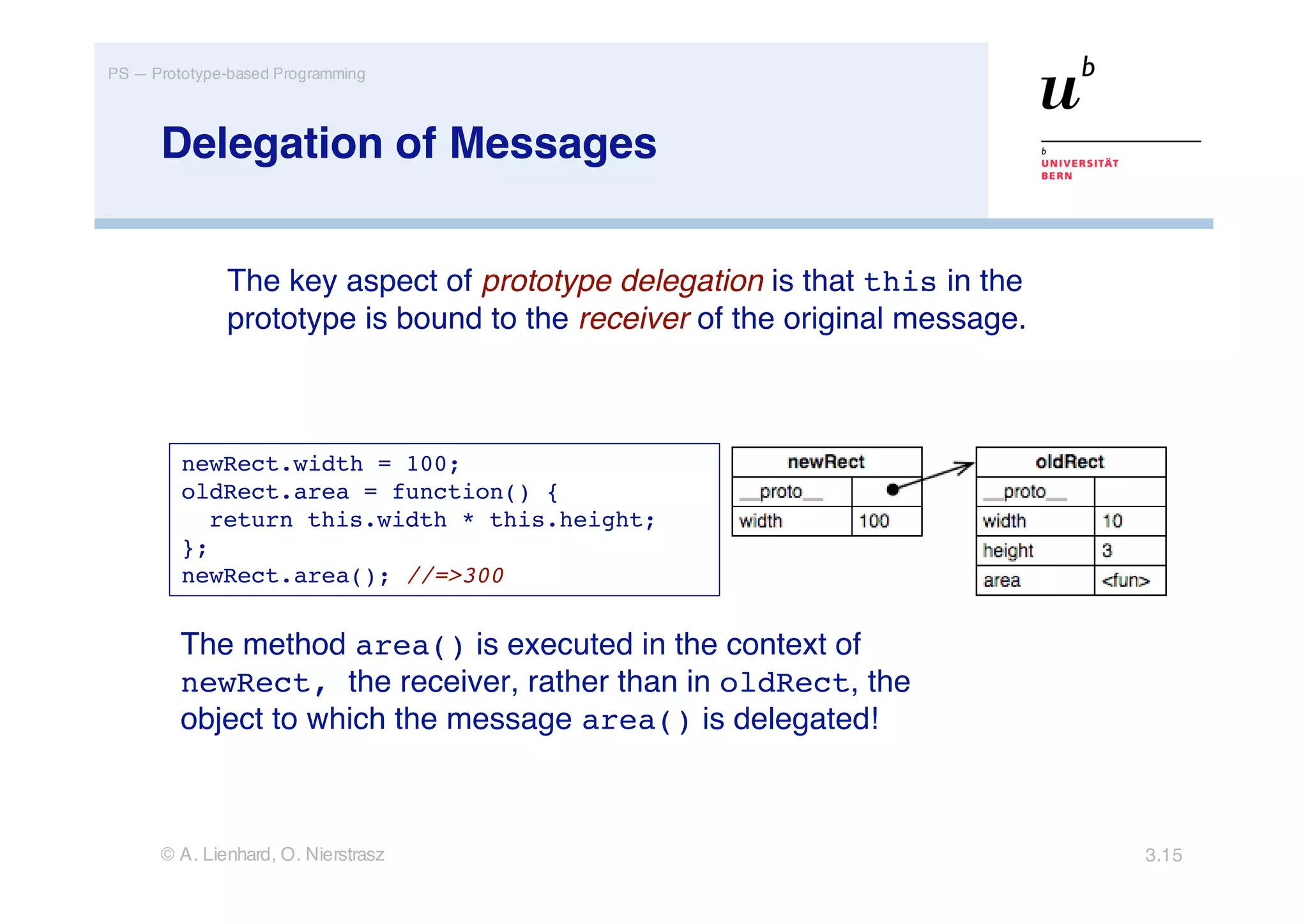
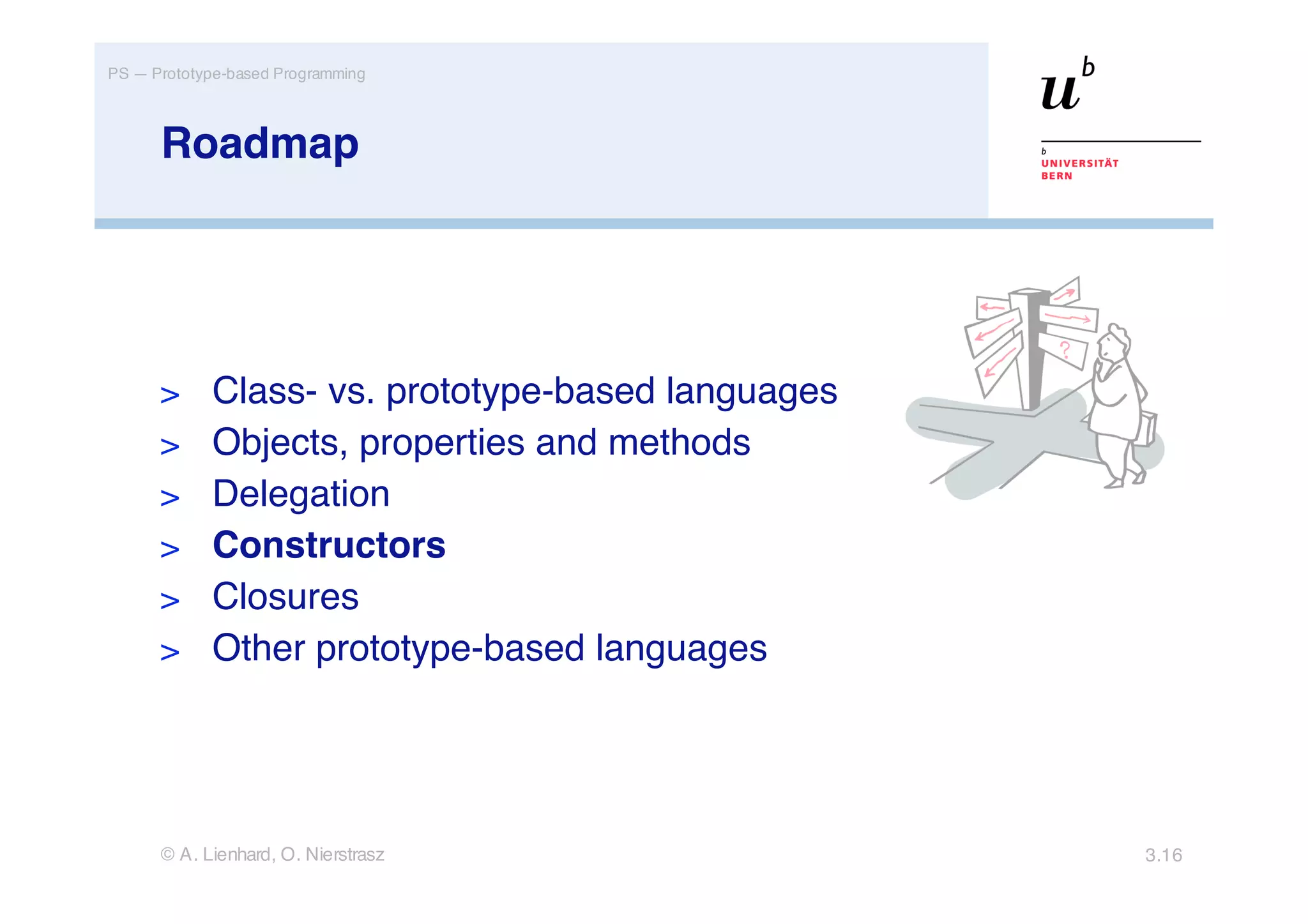
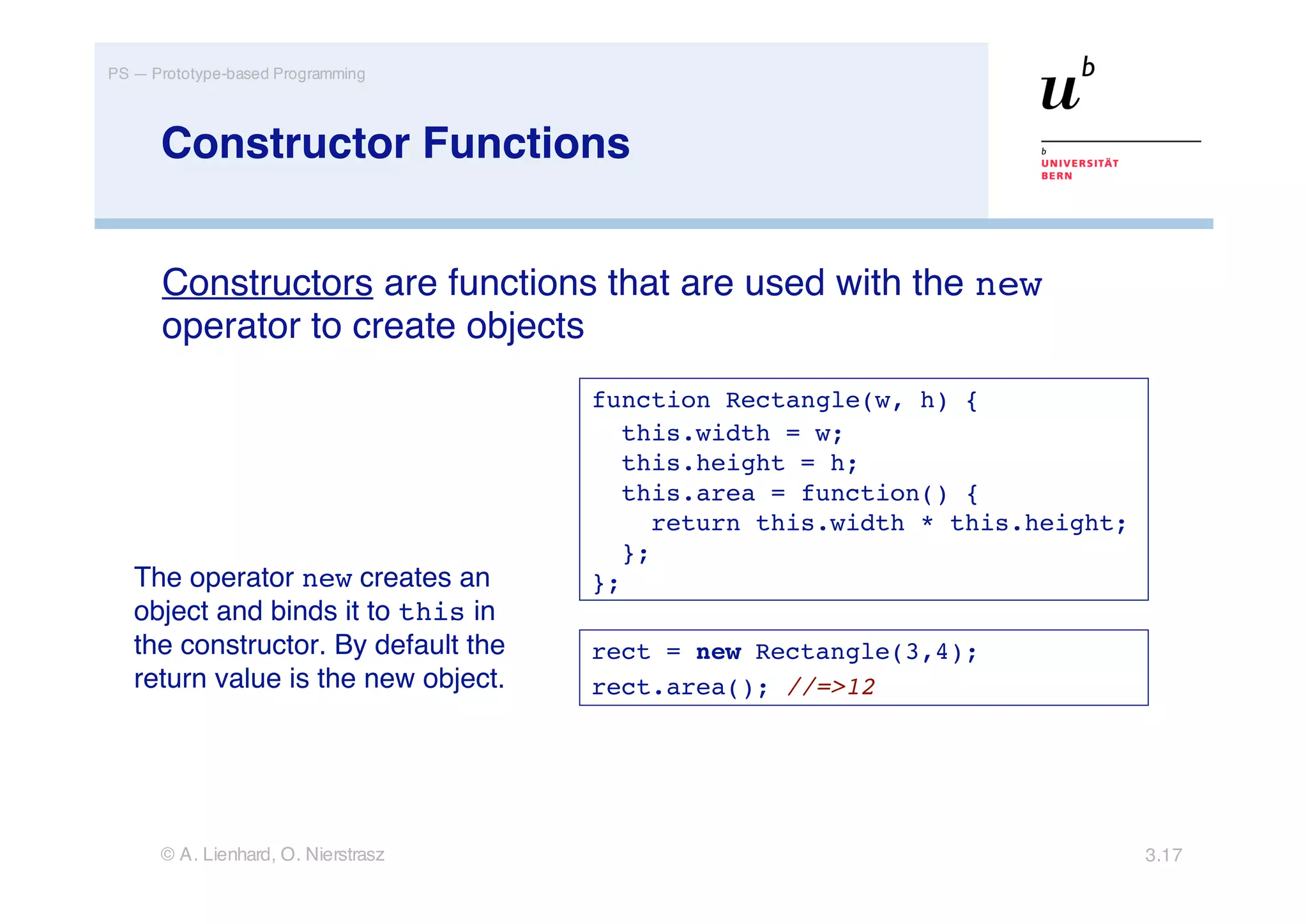
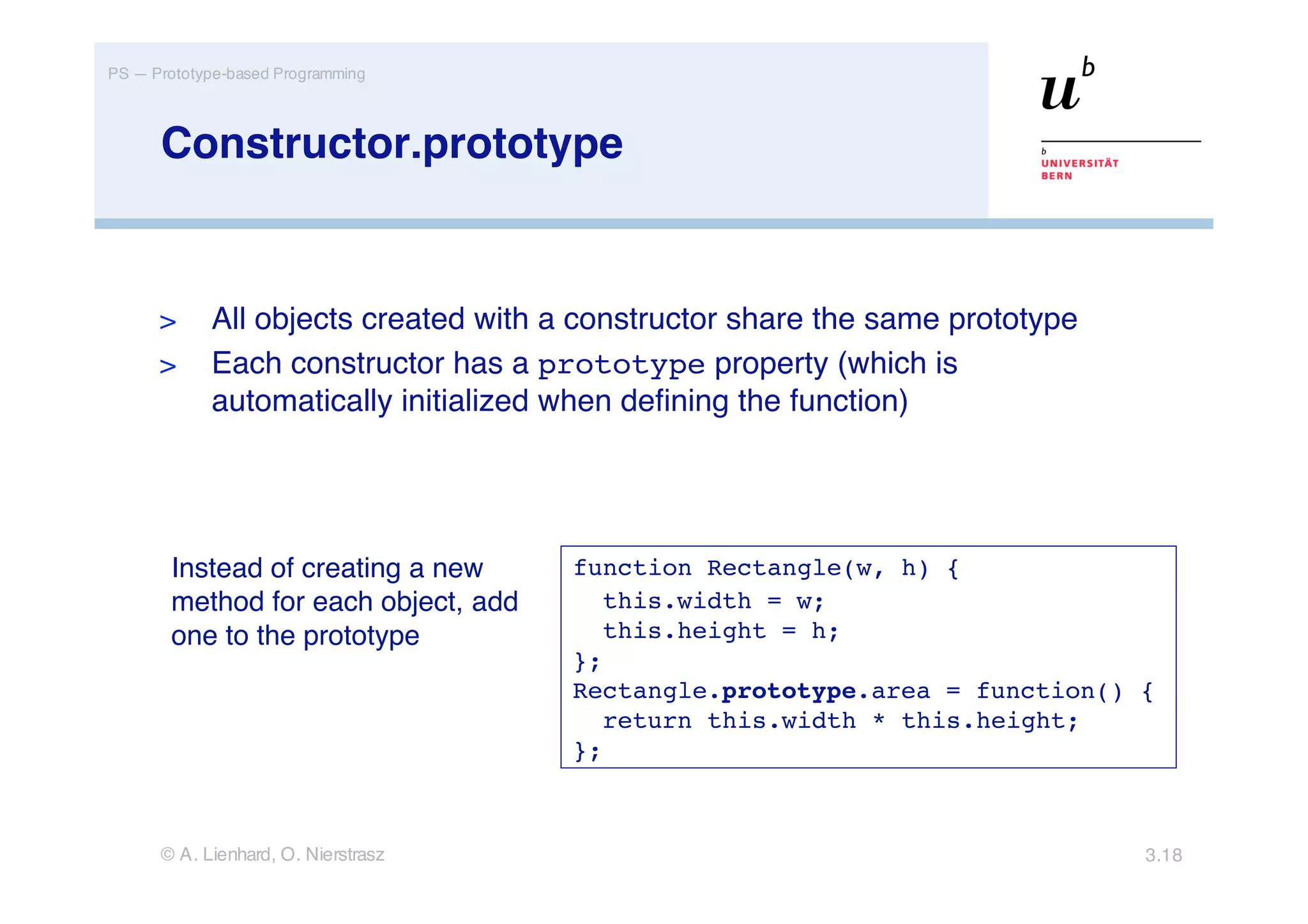
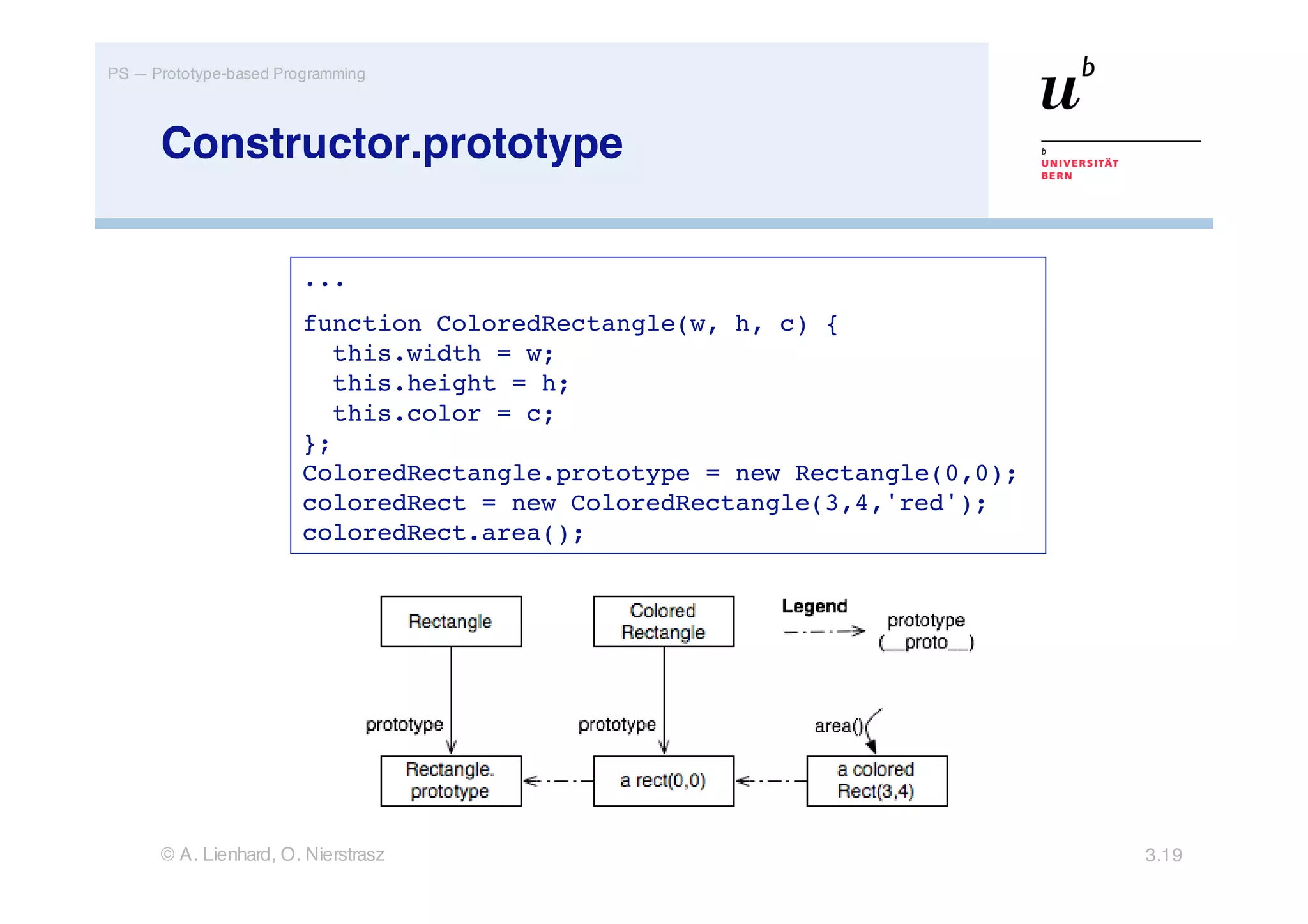
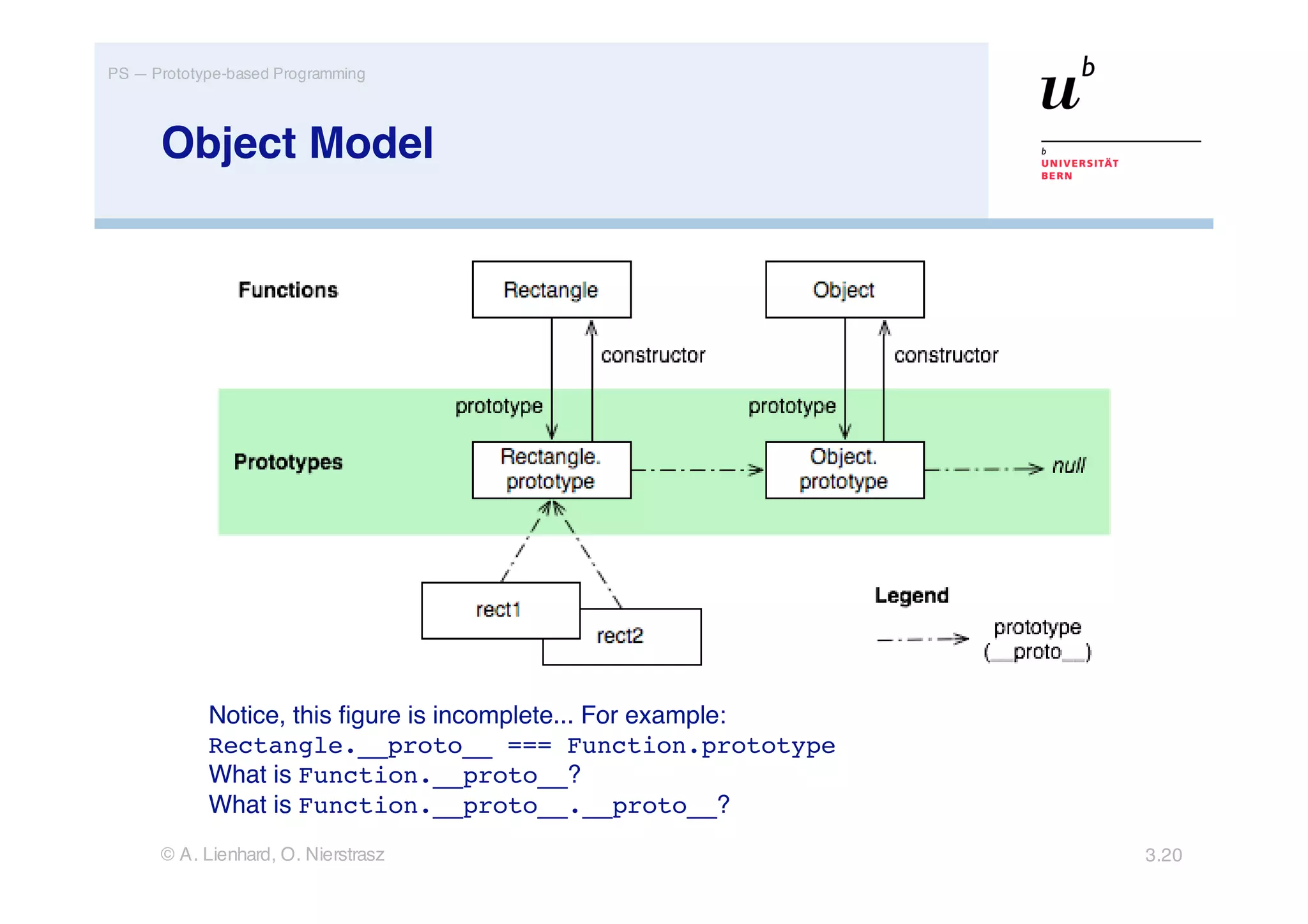
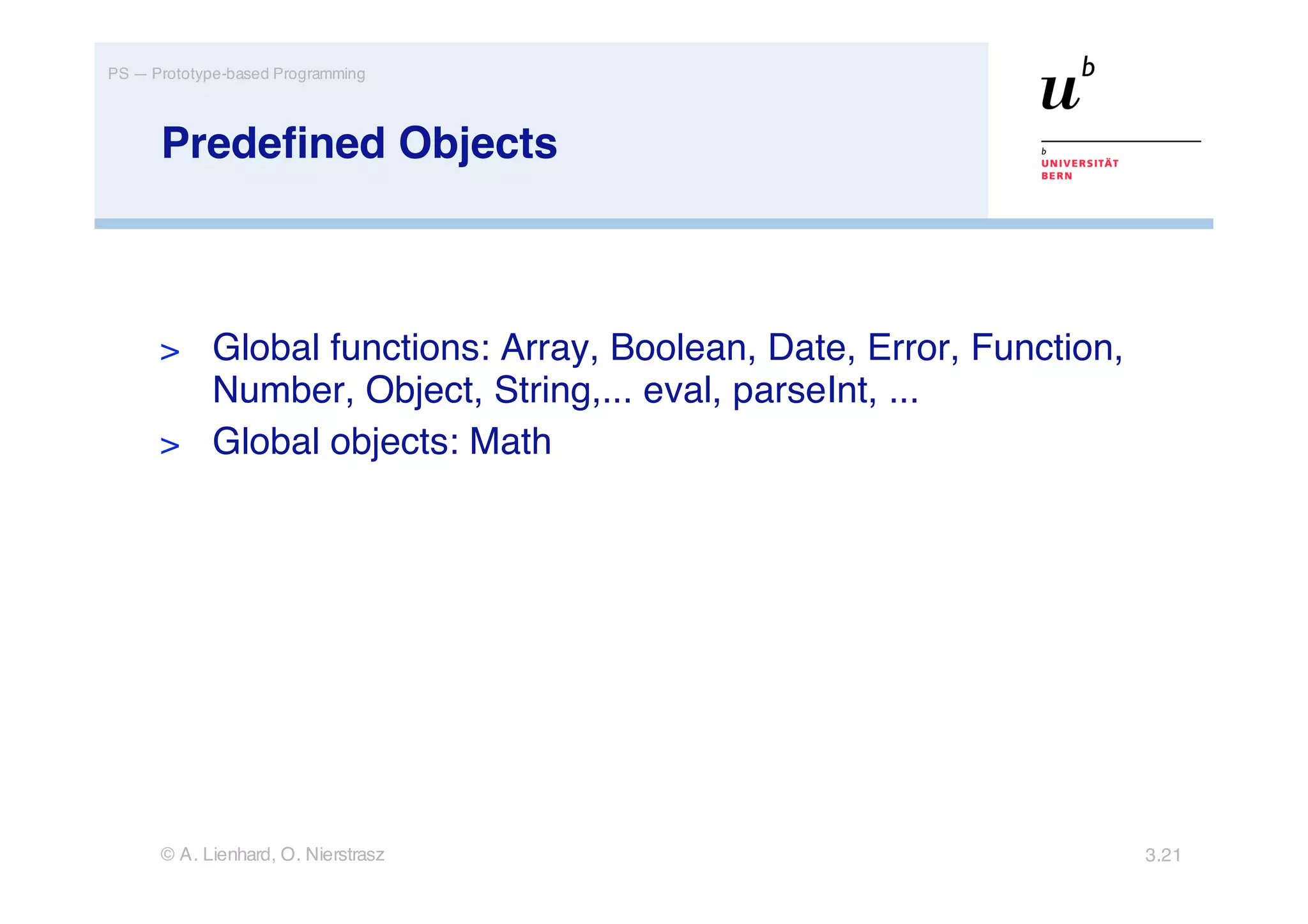
![PS — Prototype-based Programming
Extending Predefined Objects
Extending all objects Object.prototype.inspect = function() {
alert(this);
The last object in the };
prototype chain of 'a string'.inspect();
every object is true.inspect();
Object.prototype (new Date()).inspect();
Array.prototype.map = function(f) {
Extending arrays var array = [];
for (var n = 0; n < this.length; n++) {
if (n in this) { array[n] = f(this[n]); };
};
return array;
};
[1.7, -3.1, 17].map(Math.floor); //=>[1, -4, 17]
[1.7, -3.1, 17].map(function(x) { return x+1; });
//=>[2.7, -2.1, 18]
© A. Lienhard, O. Nierstrasz 3.22](https://image.slidesharecdn.com/prototypes-100111111609-phpapp02/75/Prototype-based-Programming-with-JavaScript-22-2048.jpg)
![PS — Prototype-based Programming
The arguments object
arguments object function concat(separator) {
var result = ‘’;
for (var i = 1; i < arguments.length; i++)
you can call a function result += arguments[i] + separator;
return result;
with more arguments };
than it is formally concat(";", "red", "orange", "blue");
declared to accept //=>"red;orange;blue;"
arguments.callee returns the currently executing function
var f = function() {
if (!arguments.callee.count) {
arguments.callee.count = 0; };
arguments.callee.count++; };
f(); f(); f();
f.count; //=>3
© A. Lienhard, O. Nierstrasz 3.23](https://image.slidesharecdn.com/prototypes-100111111609-phpapp02/75/Prototype-based-Programming-with-JavaScript-23-2048.jpg)
